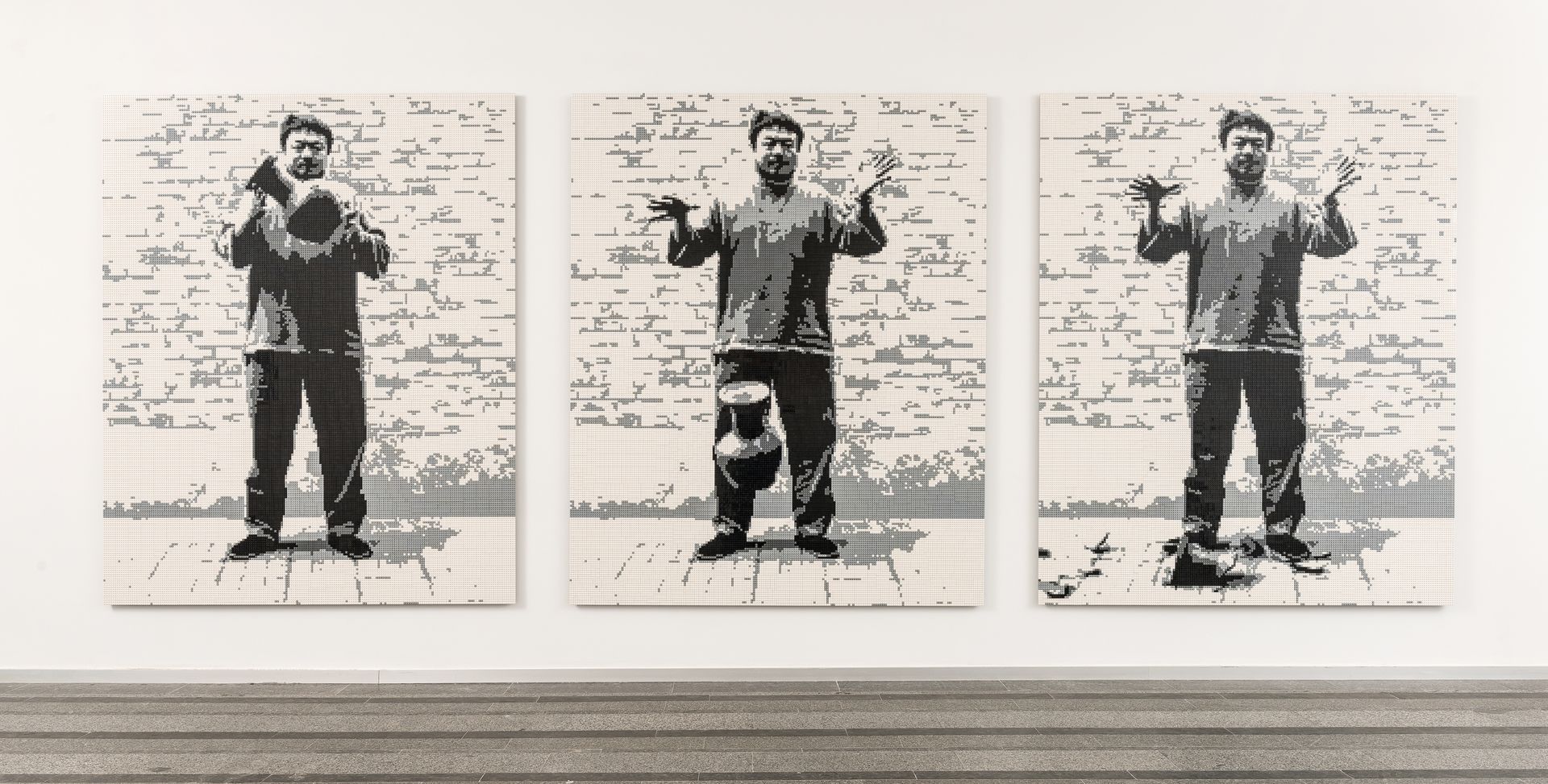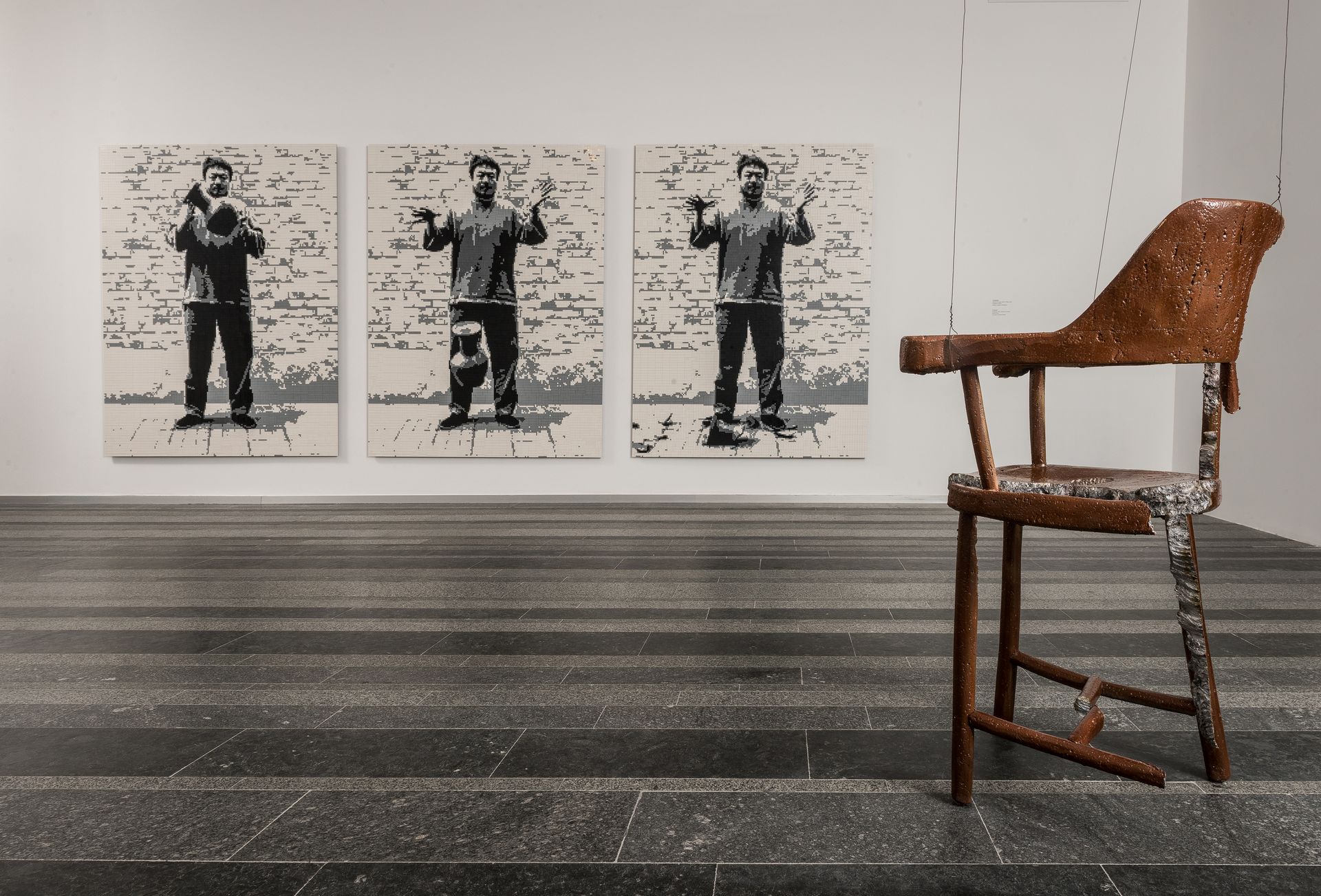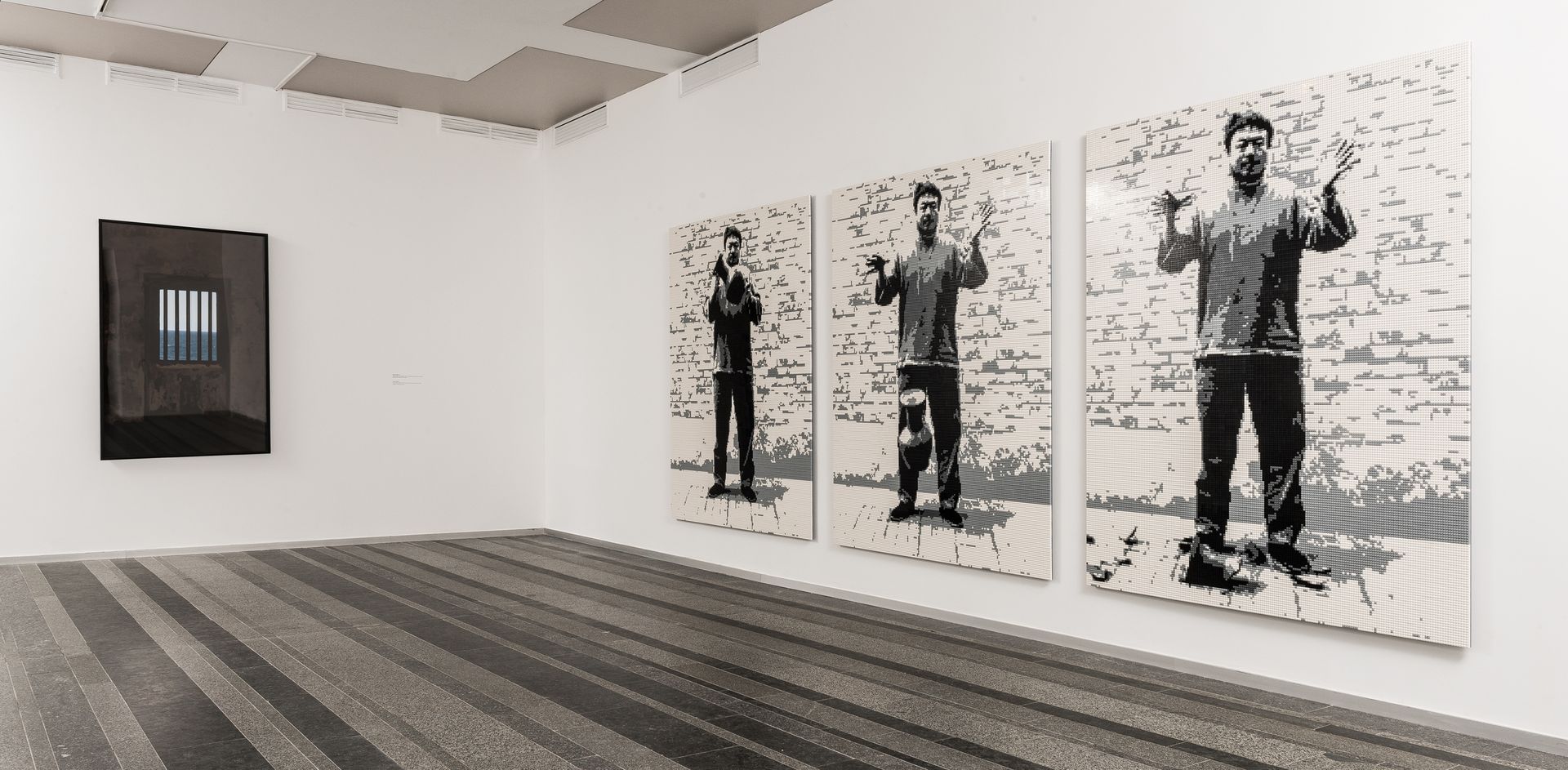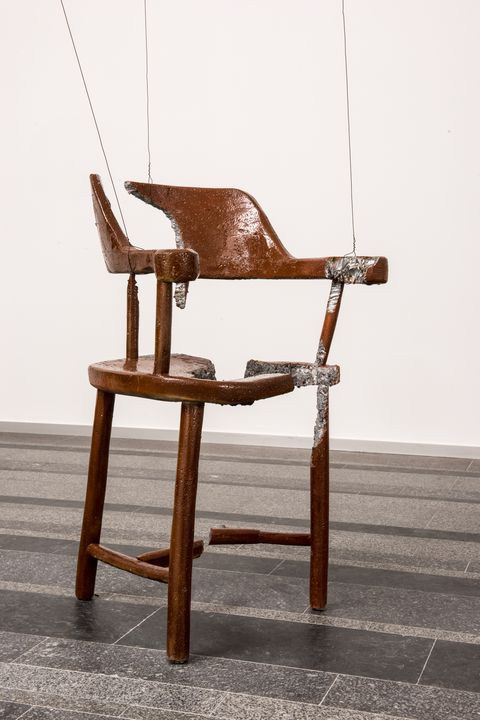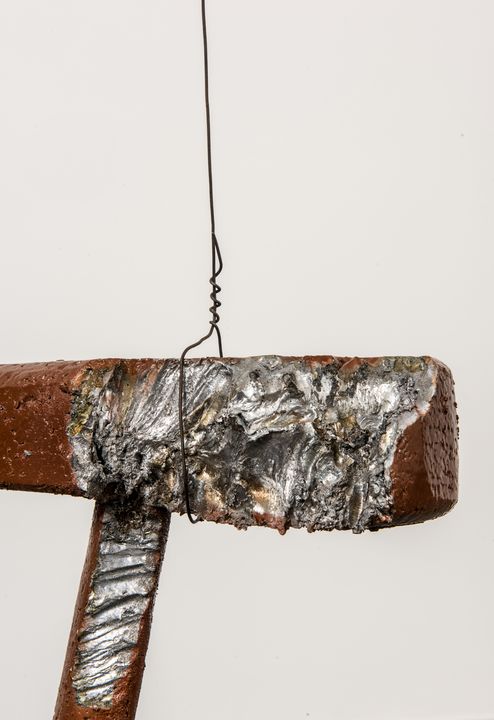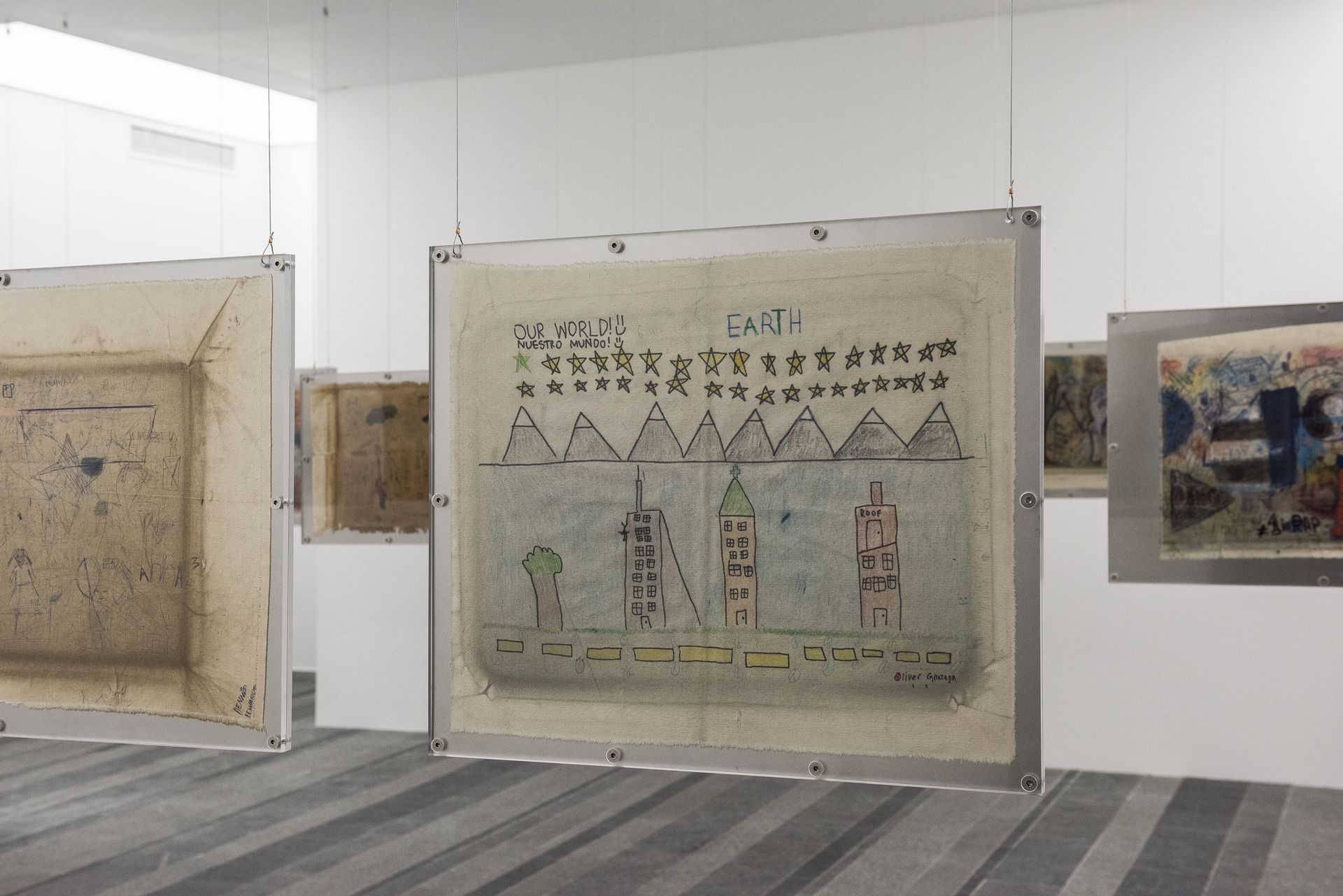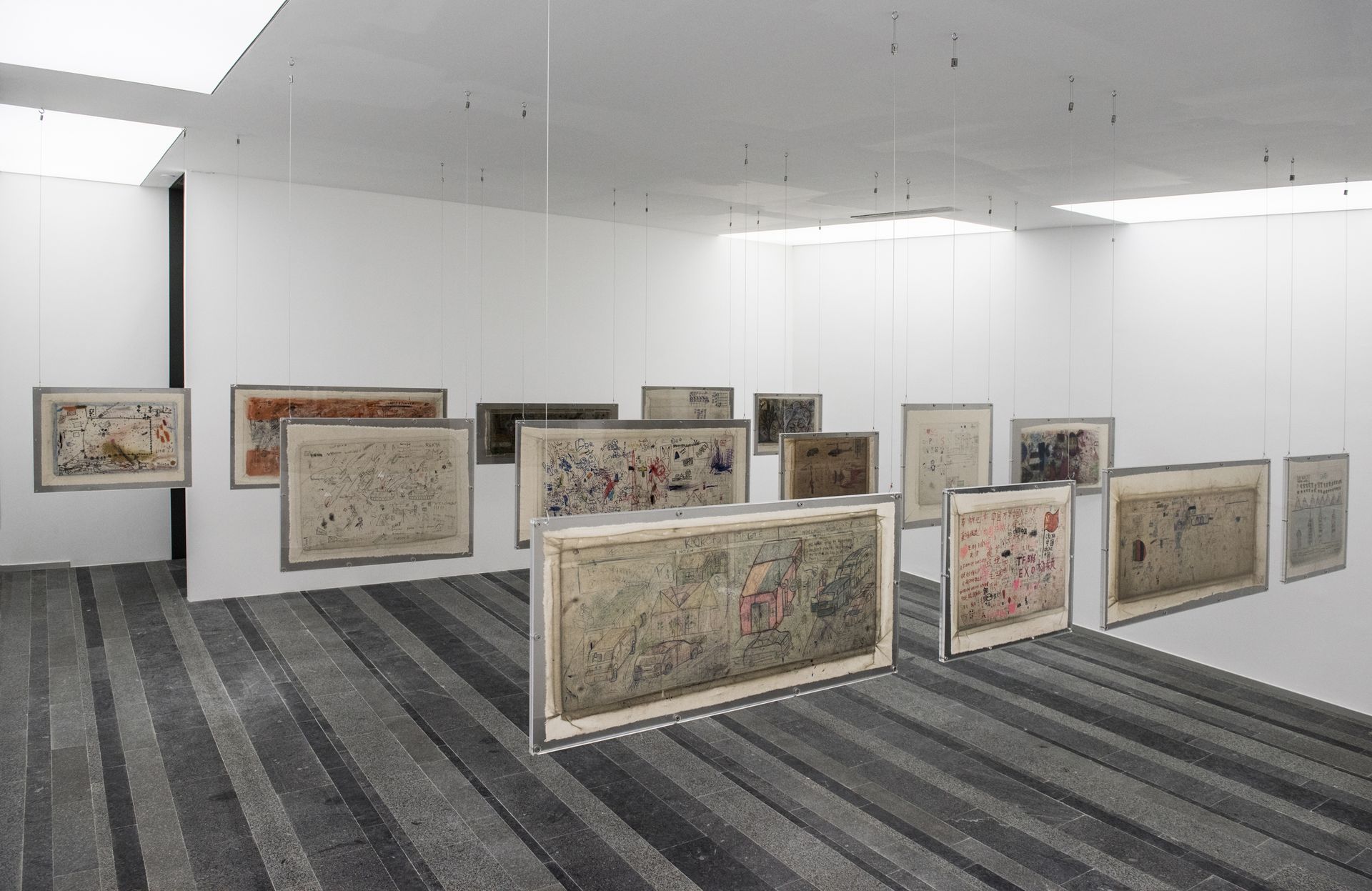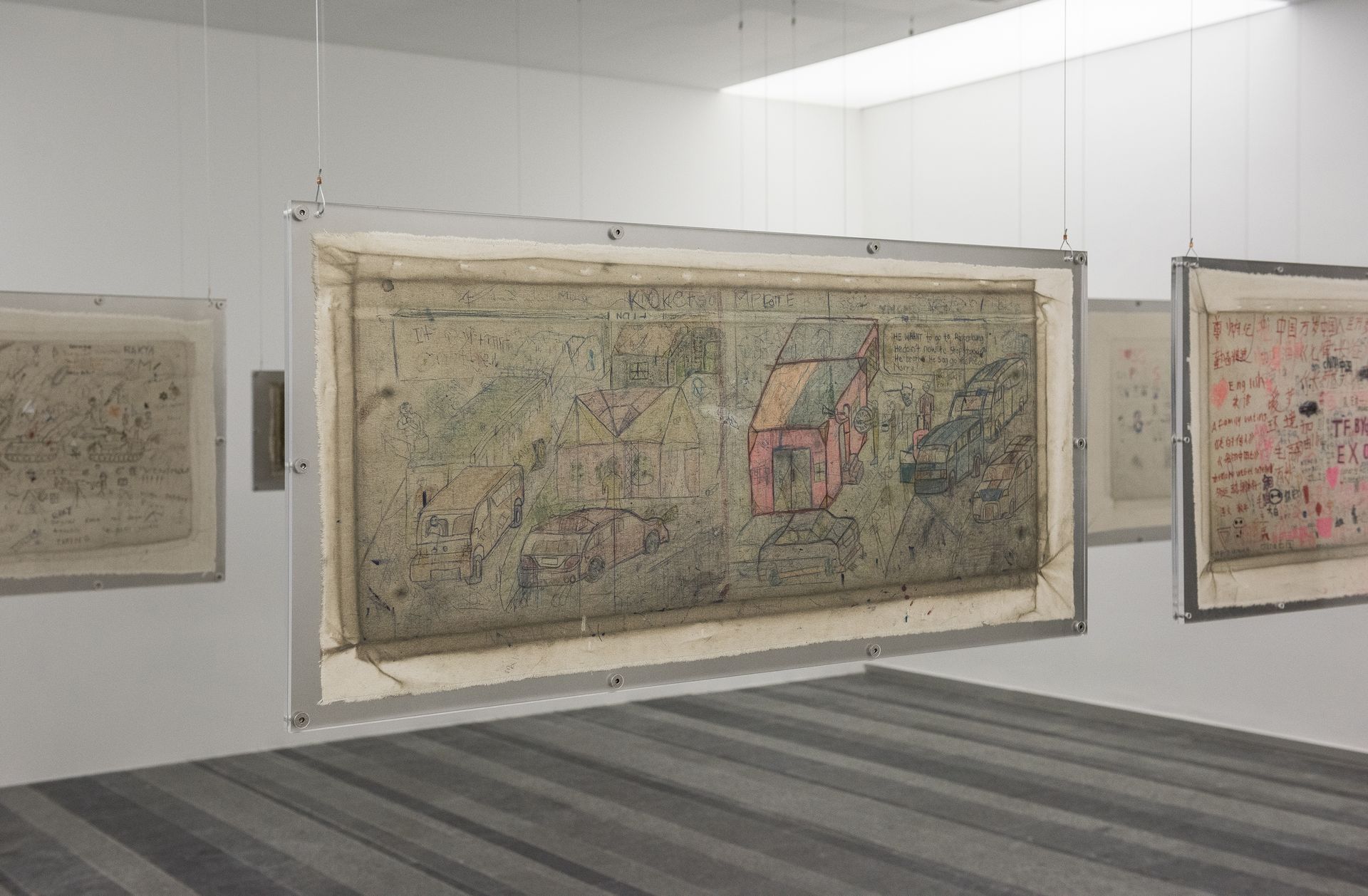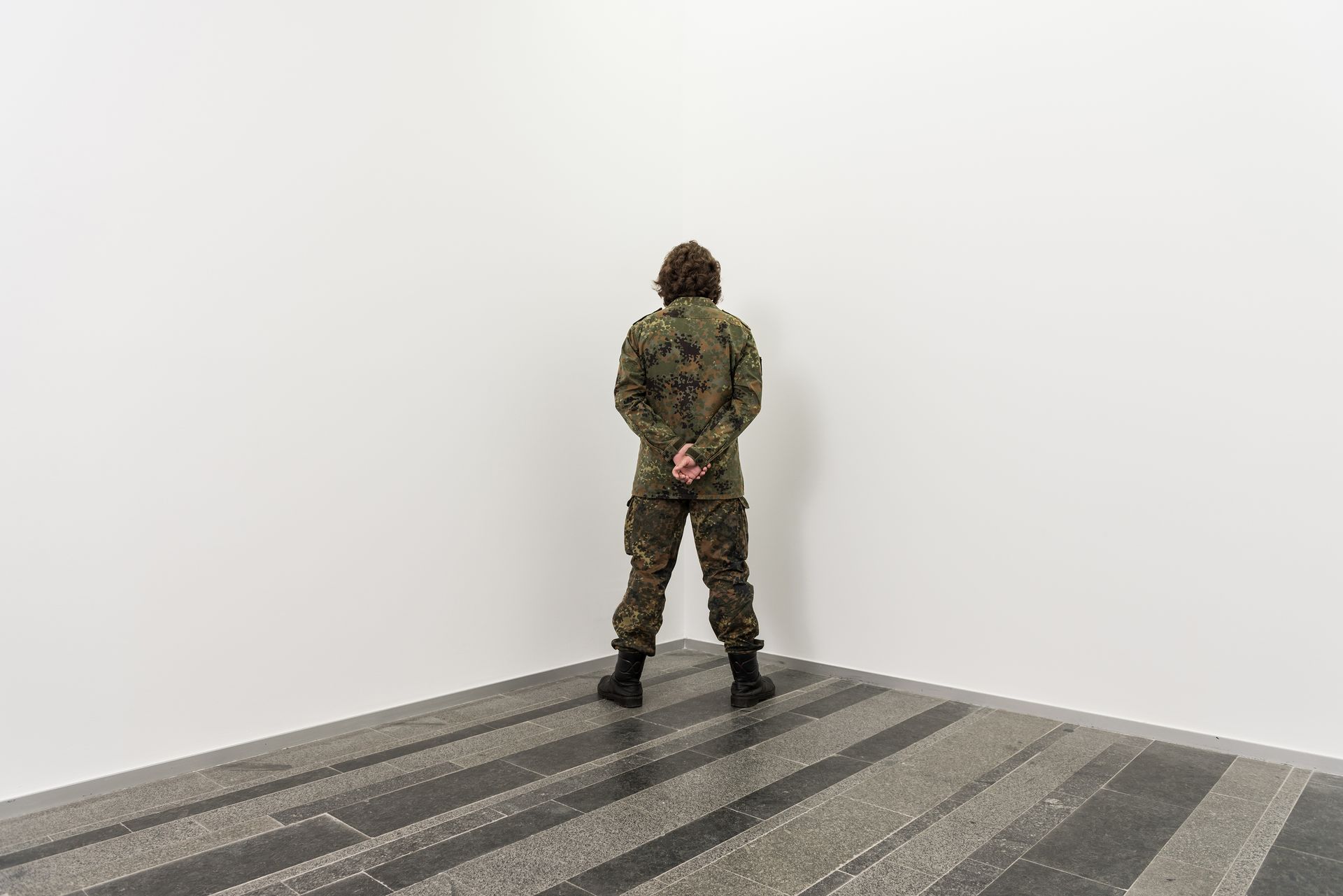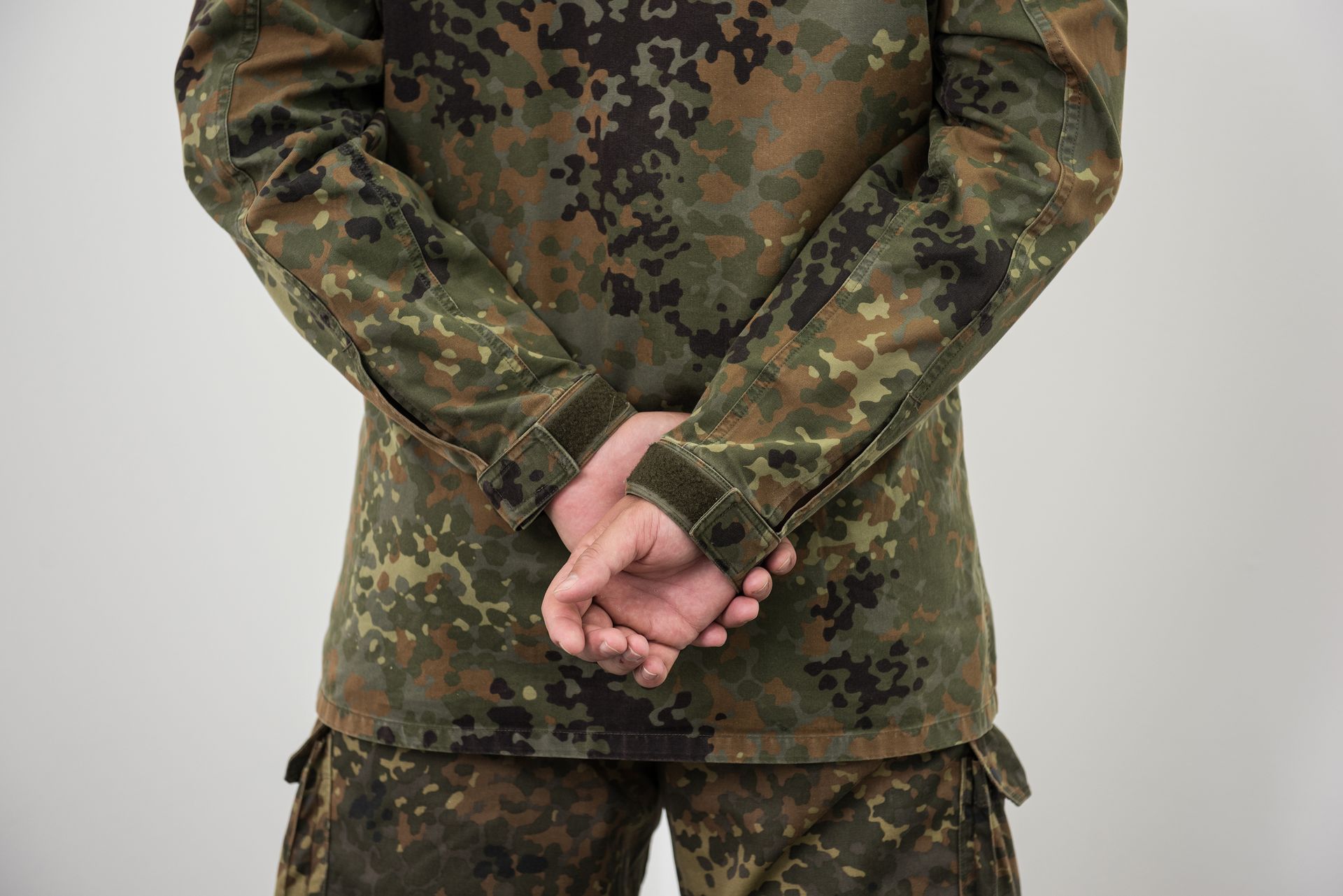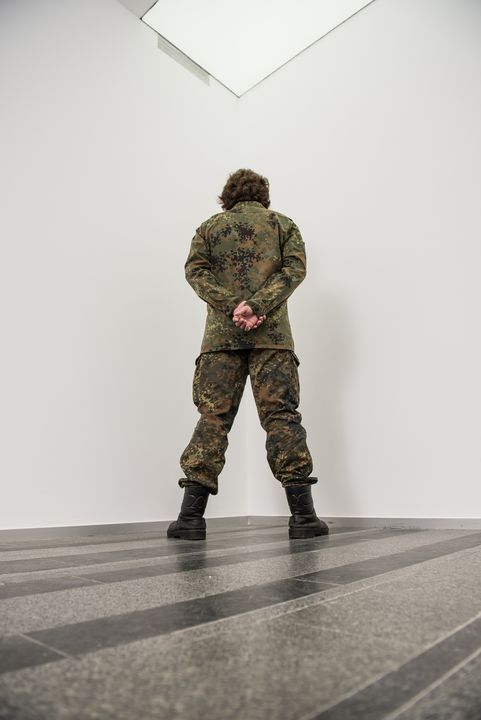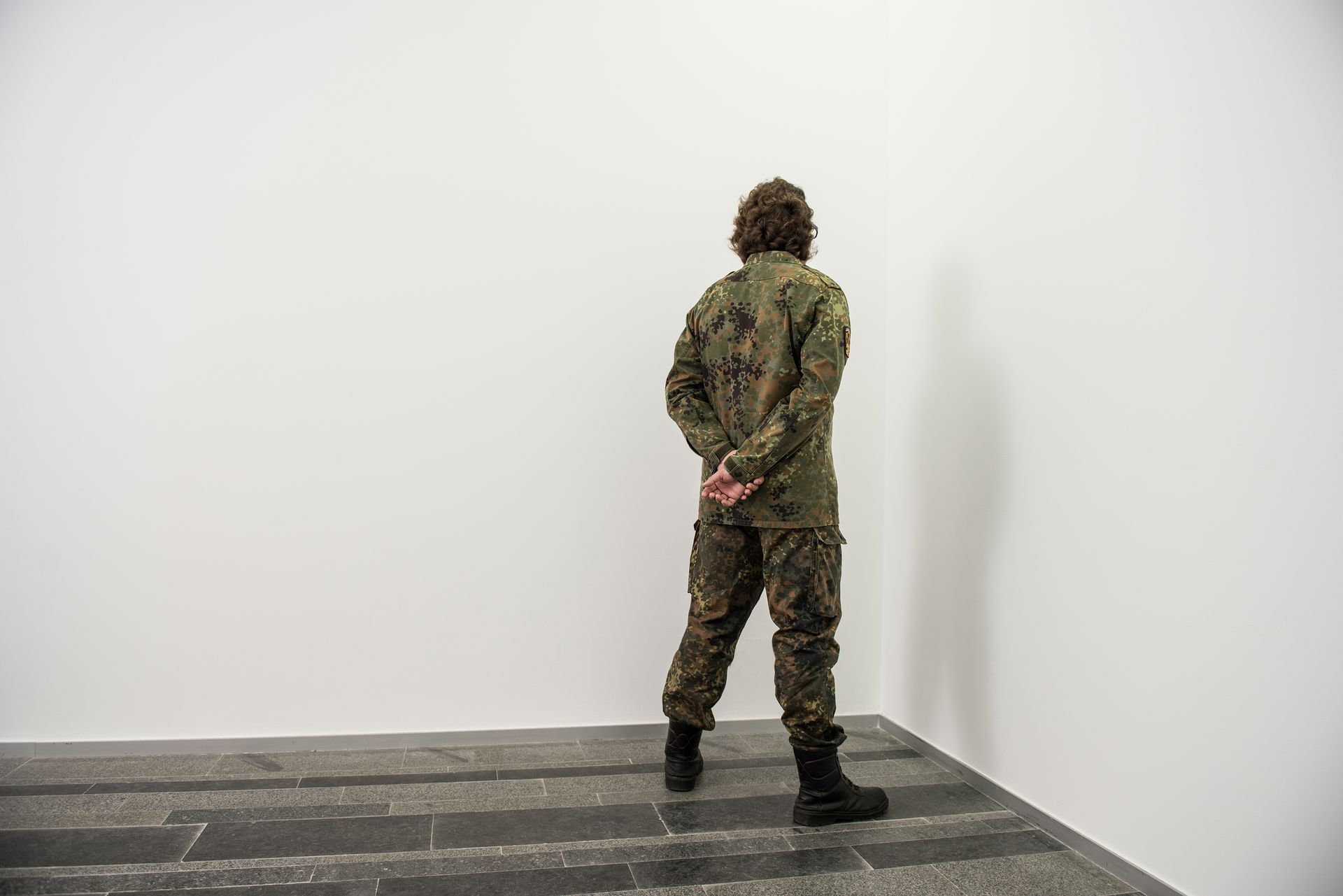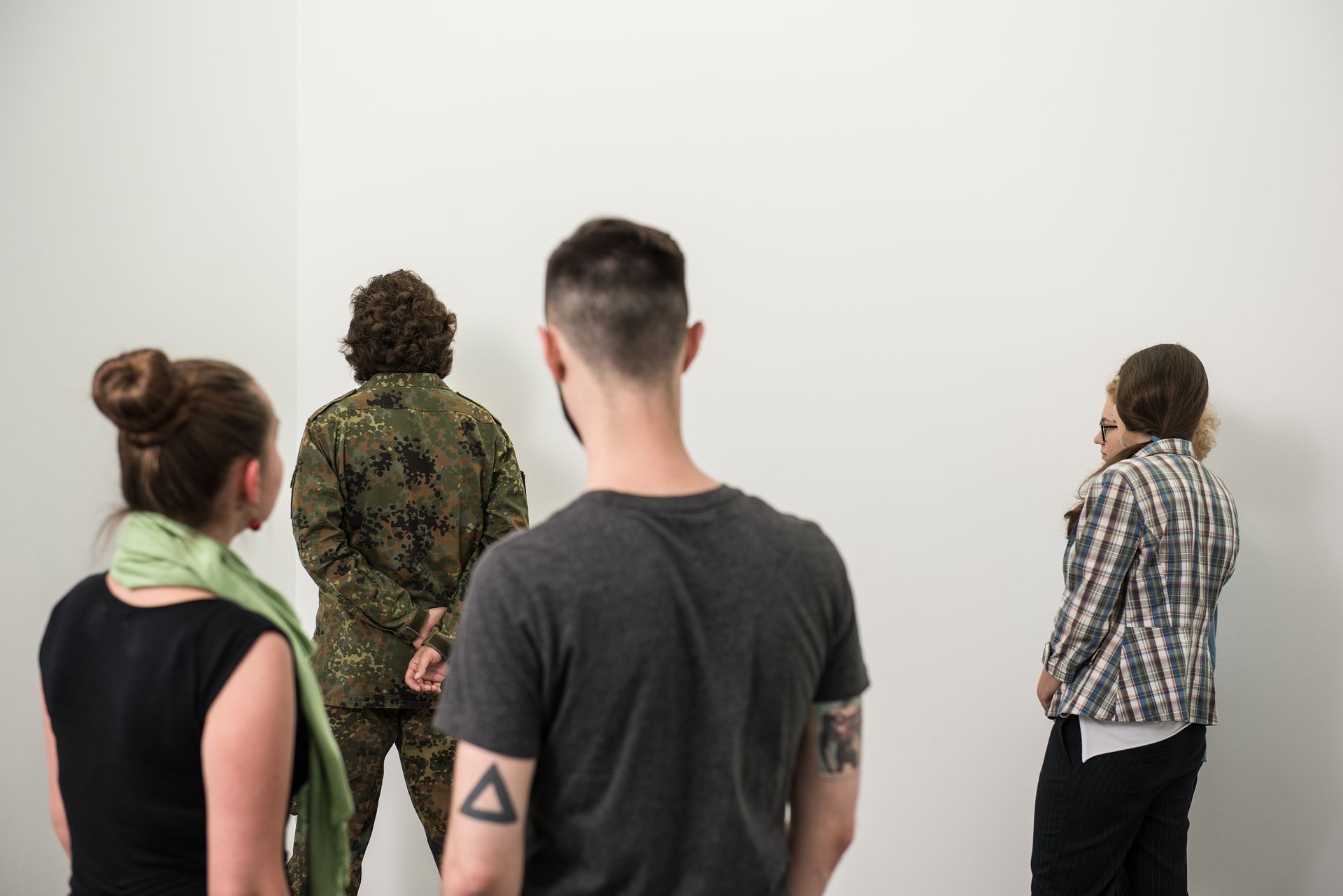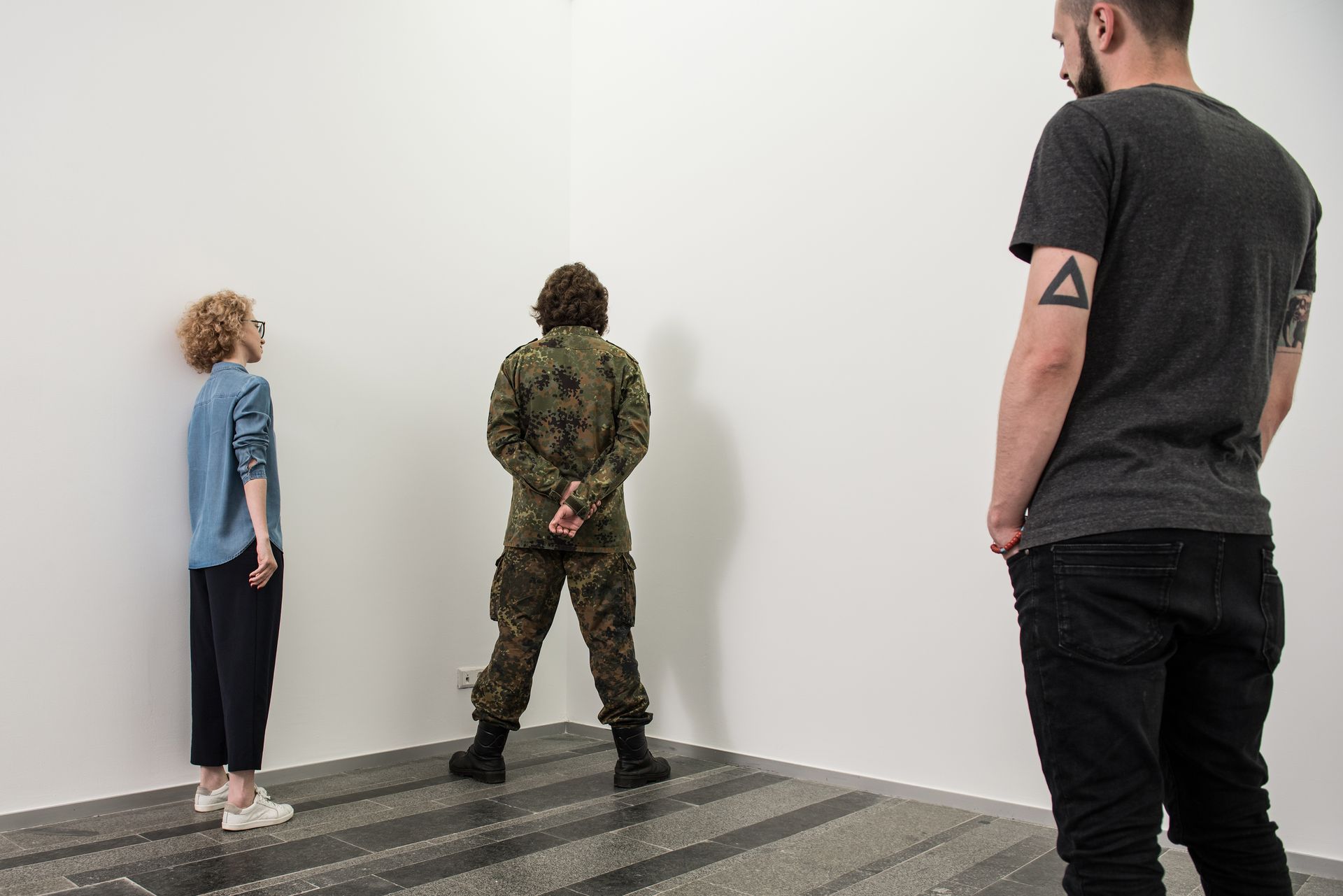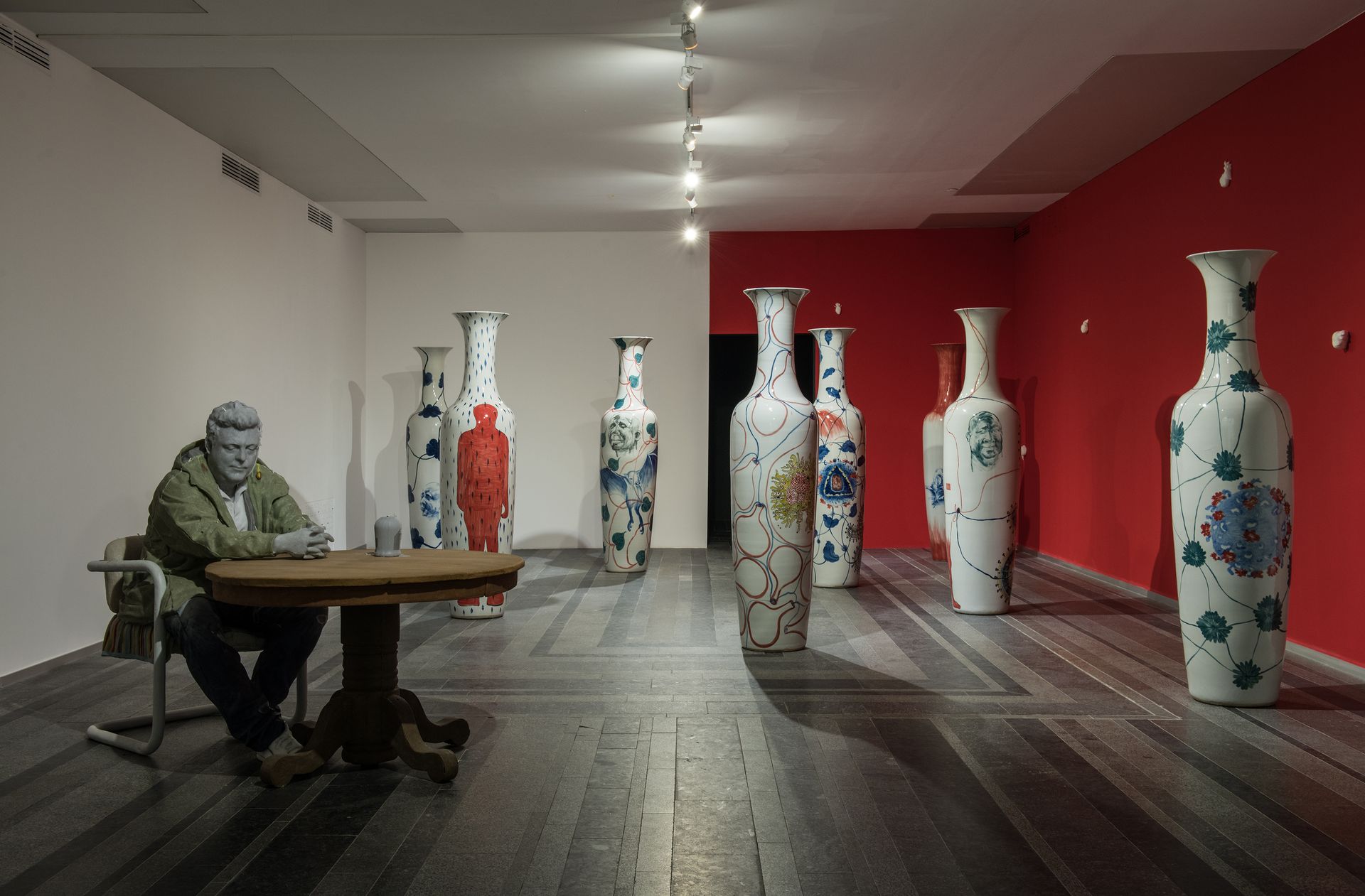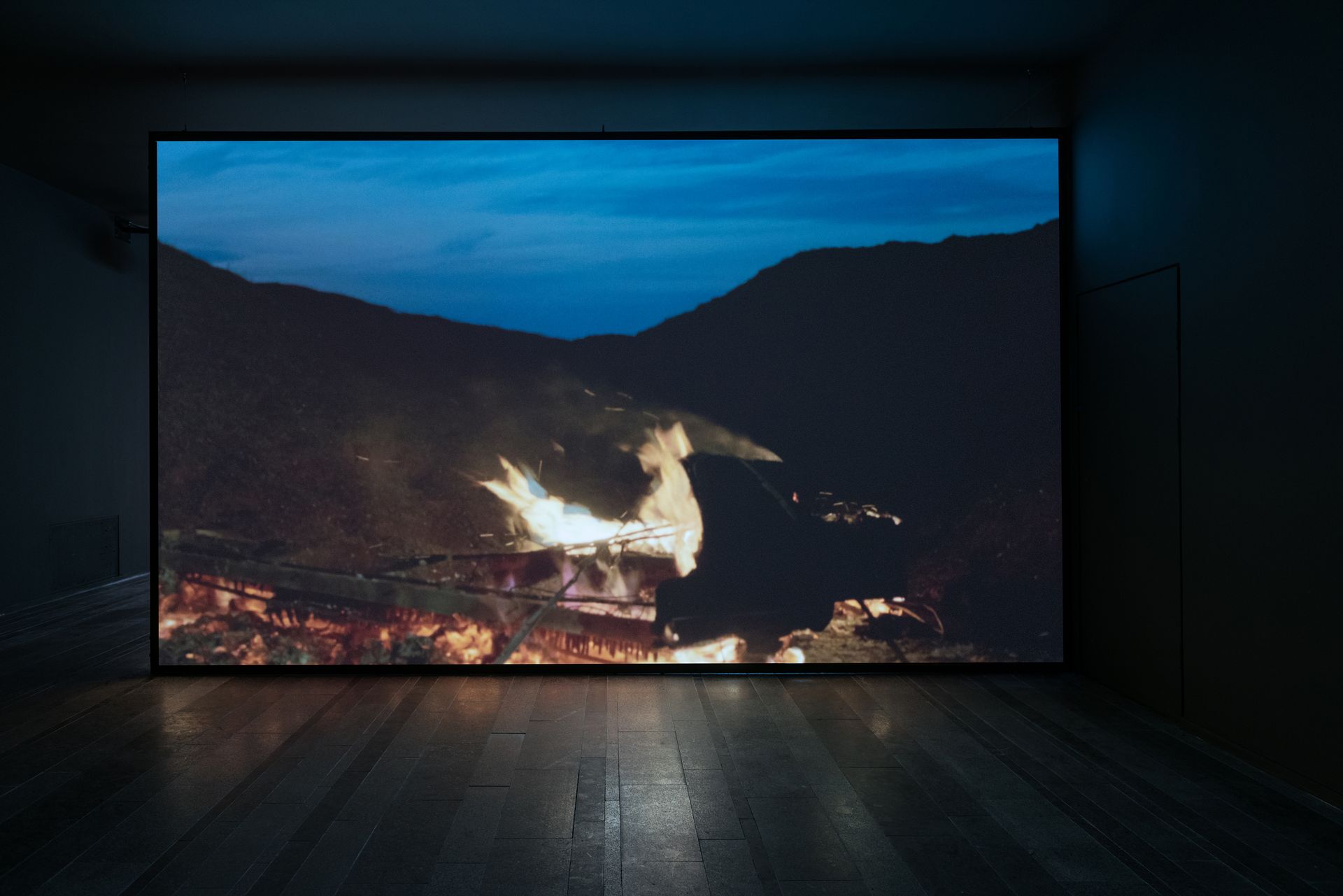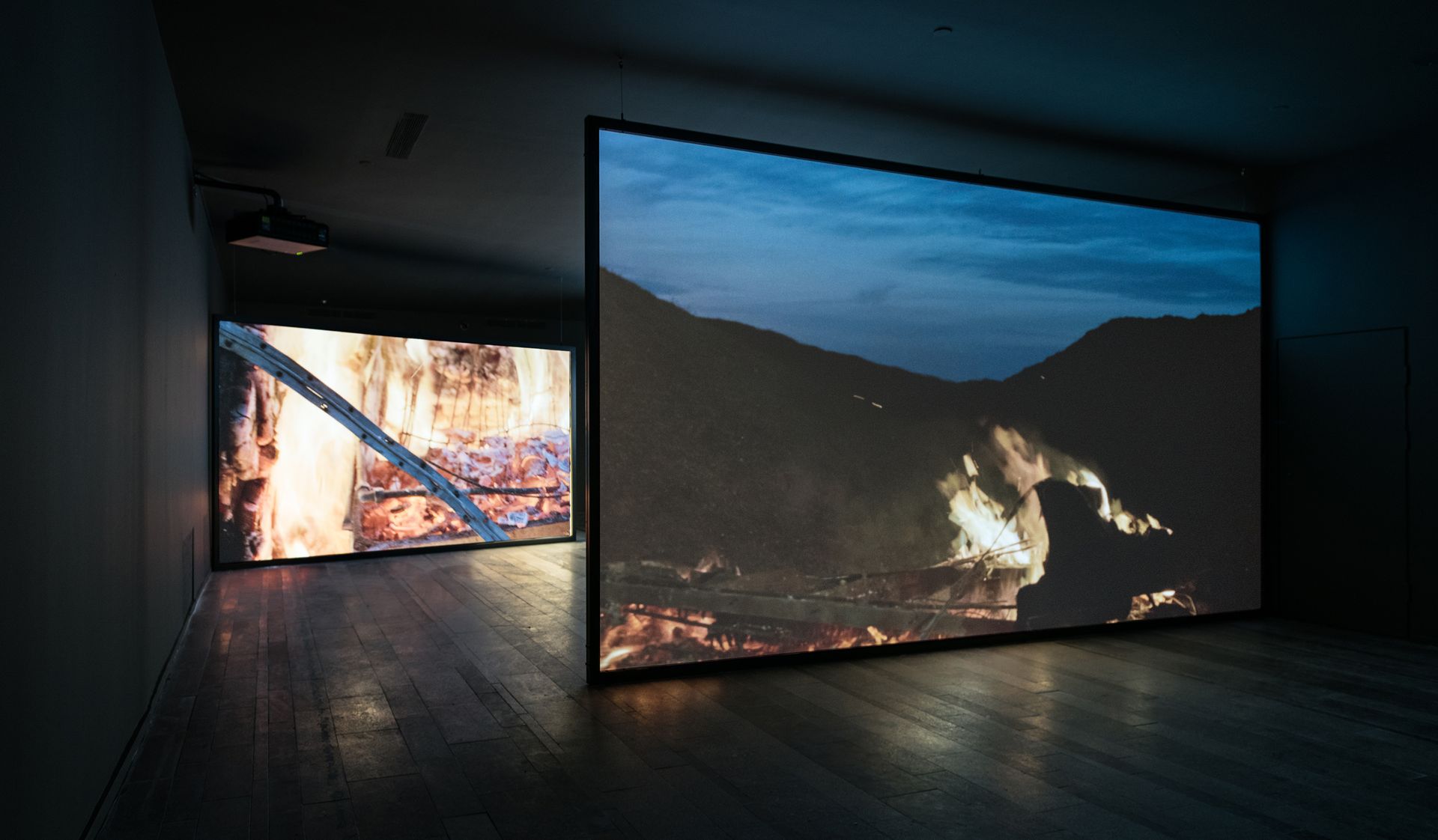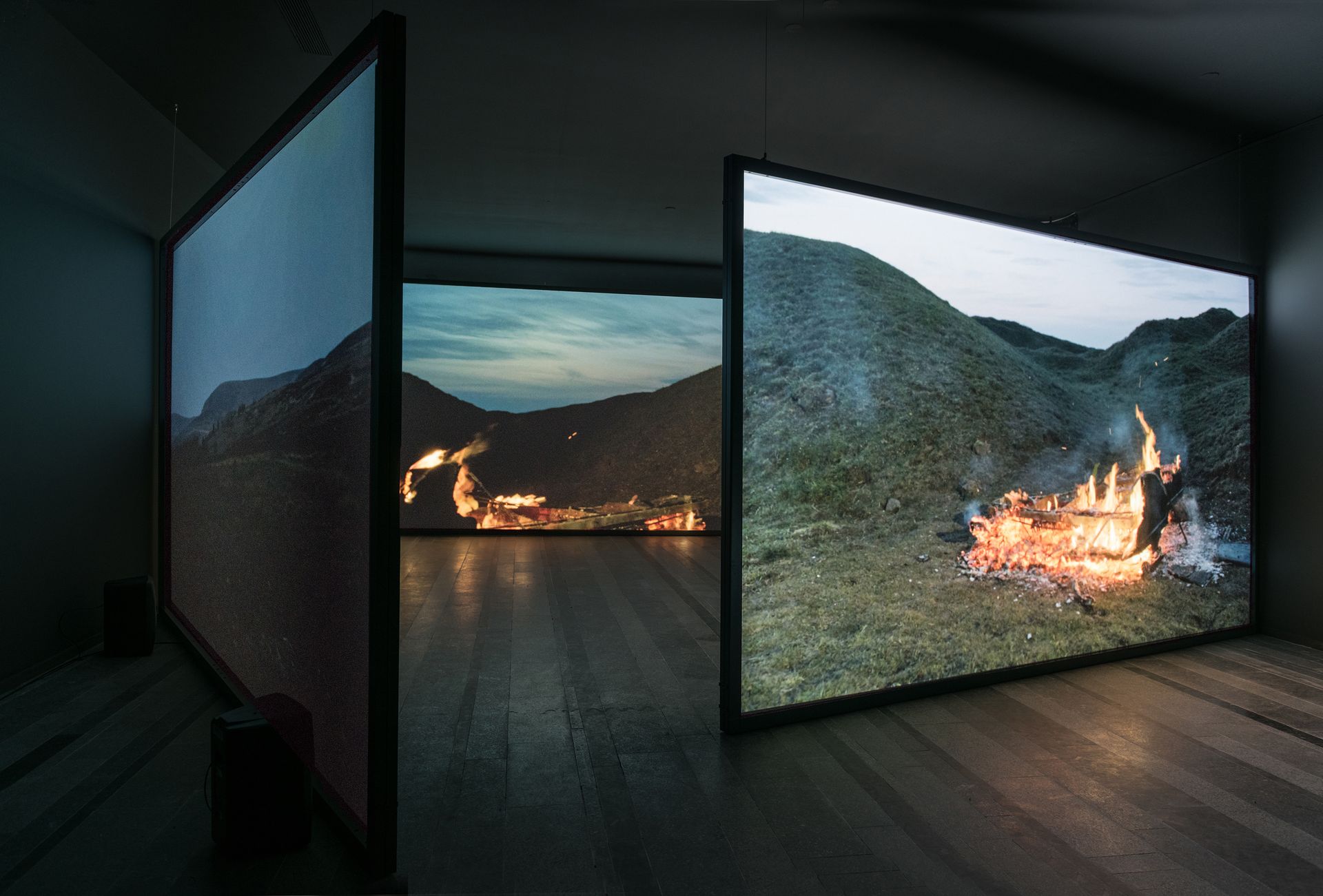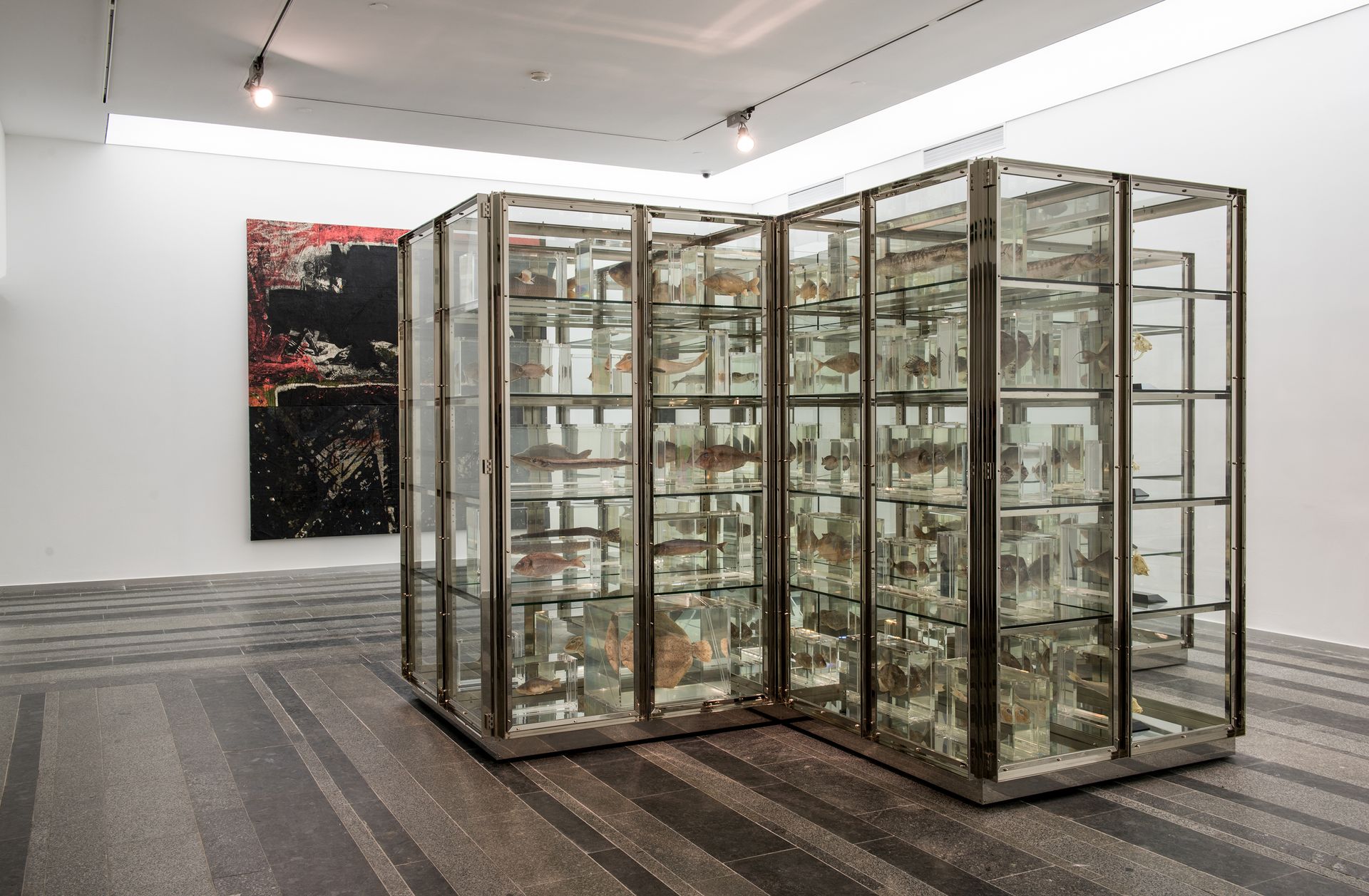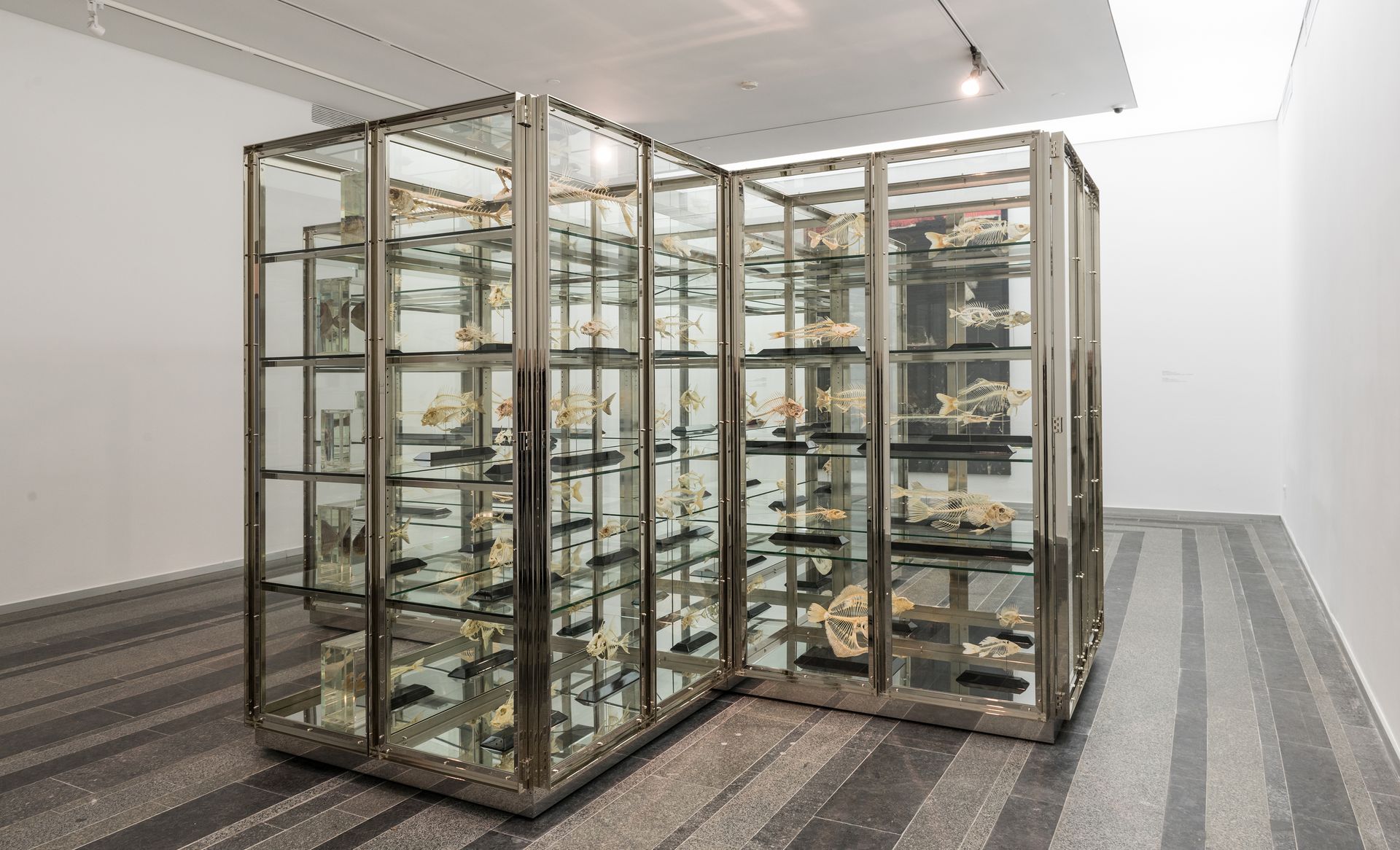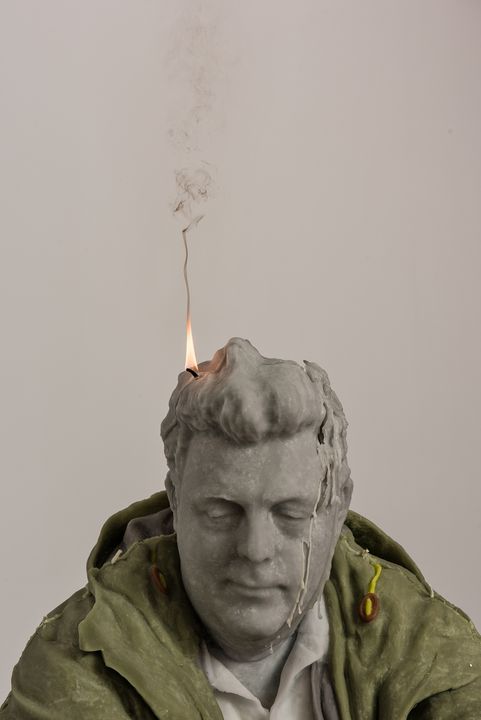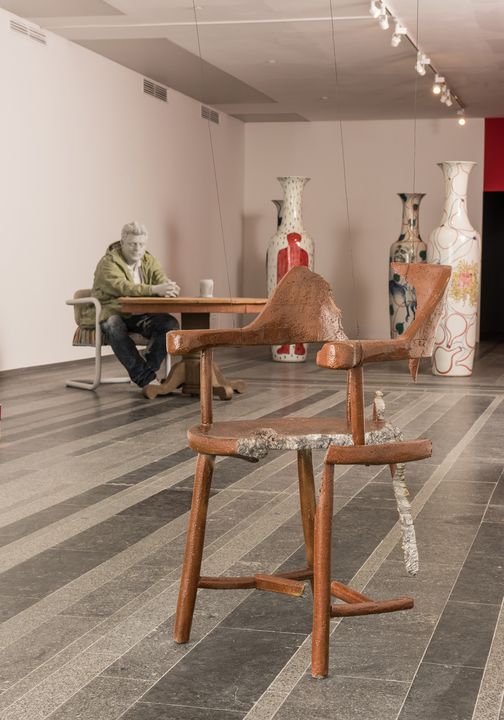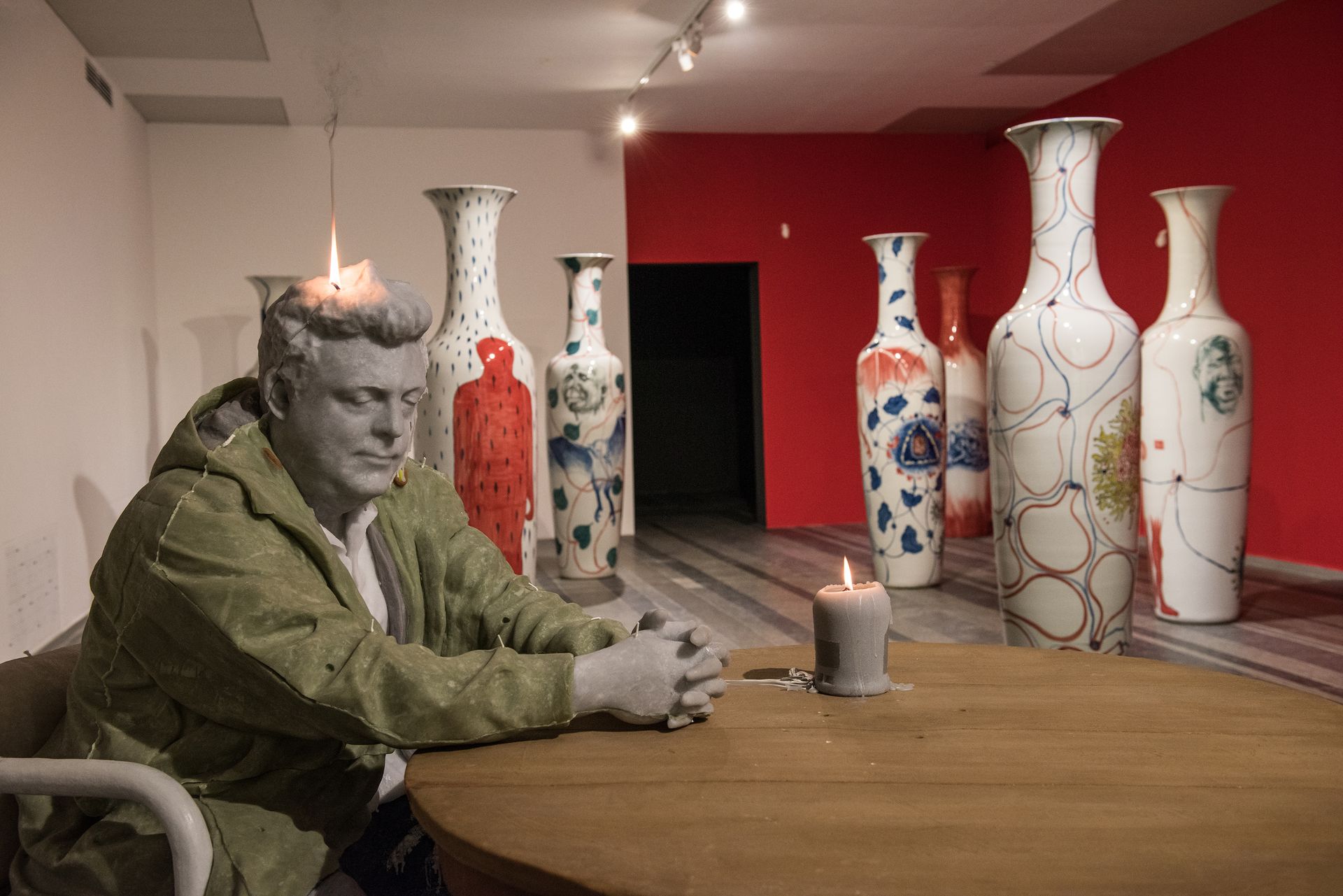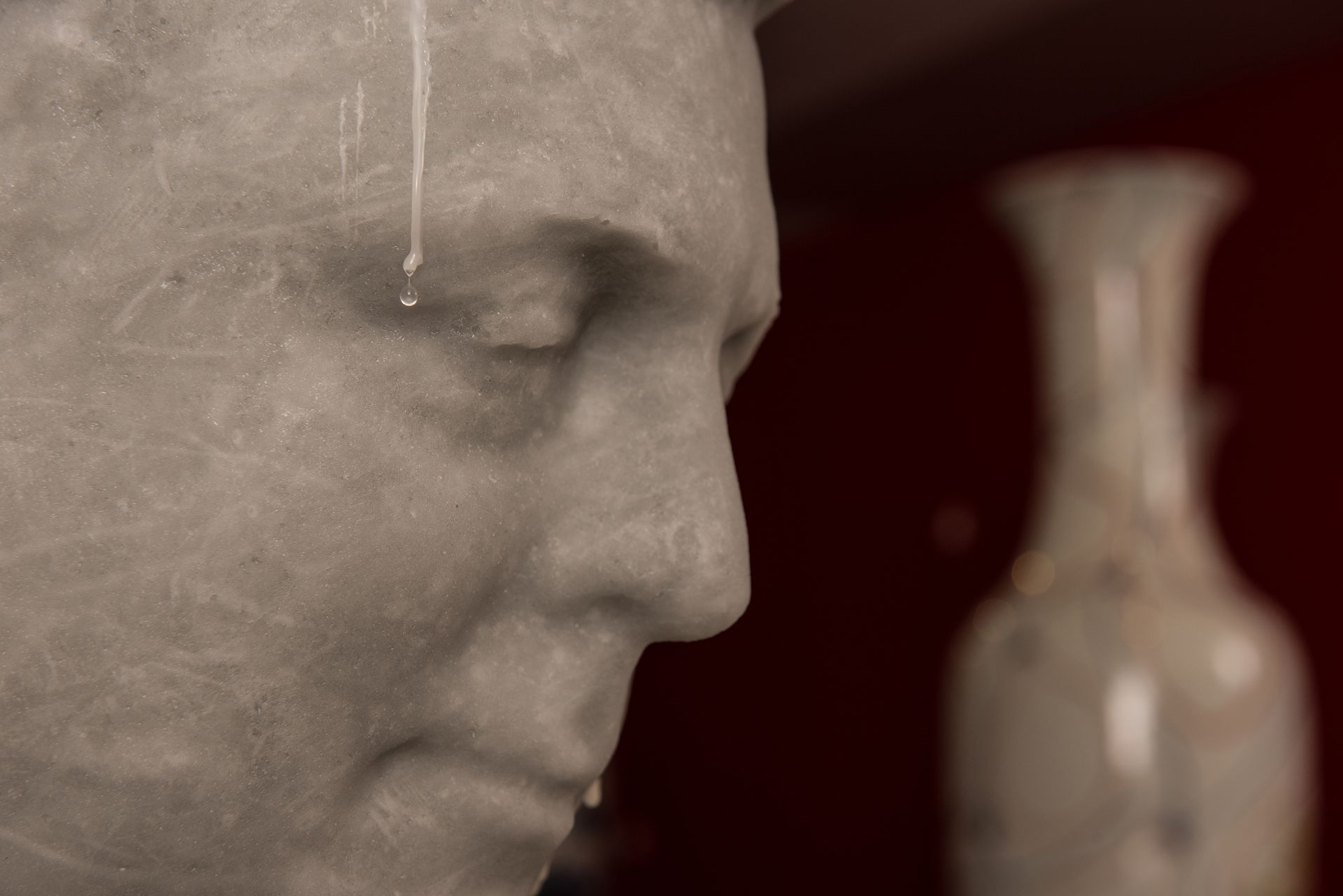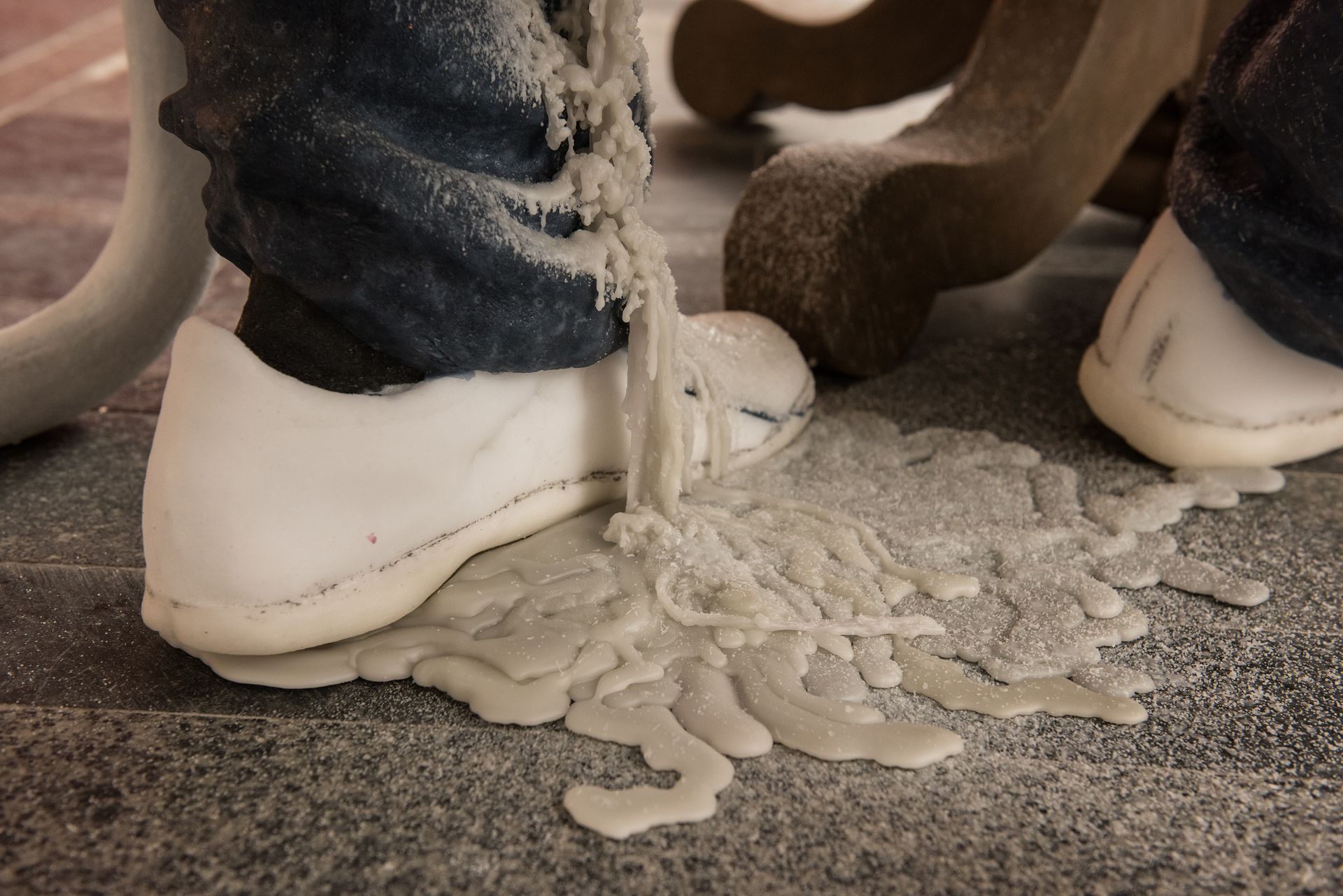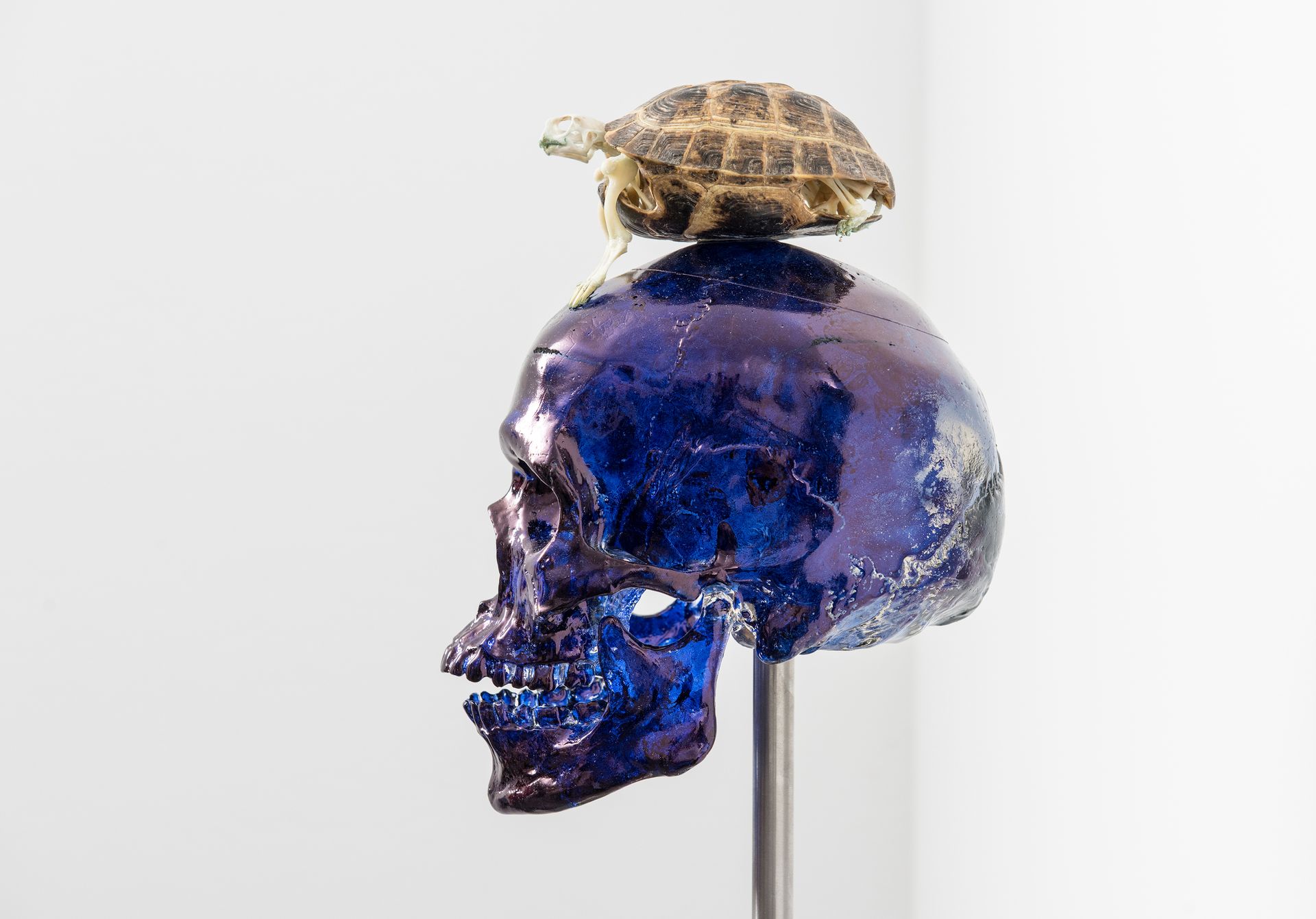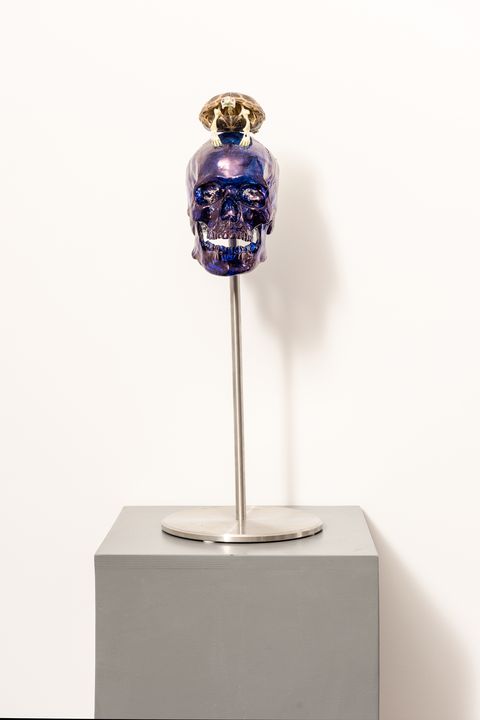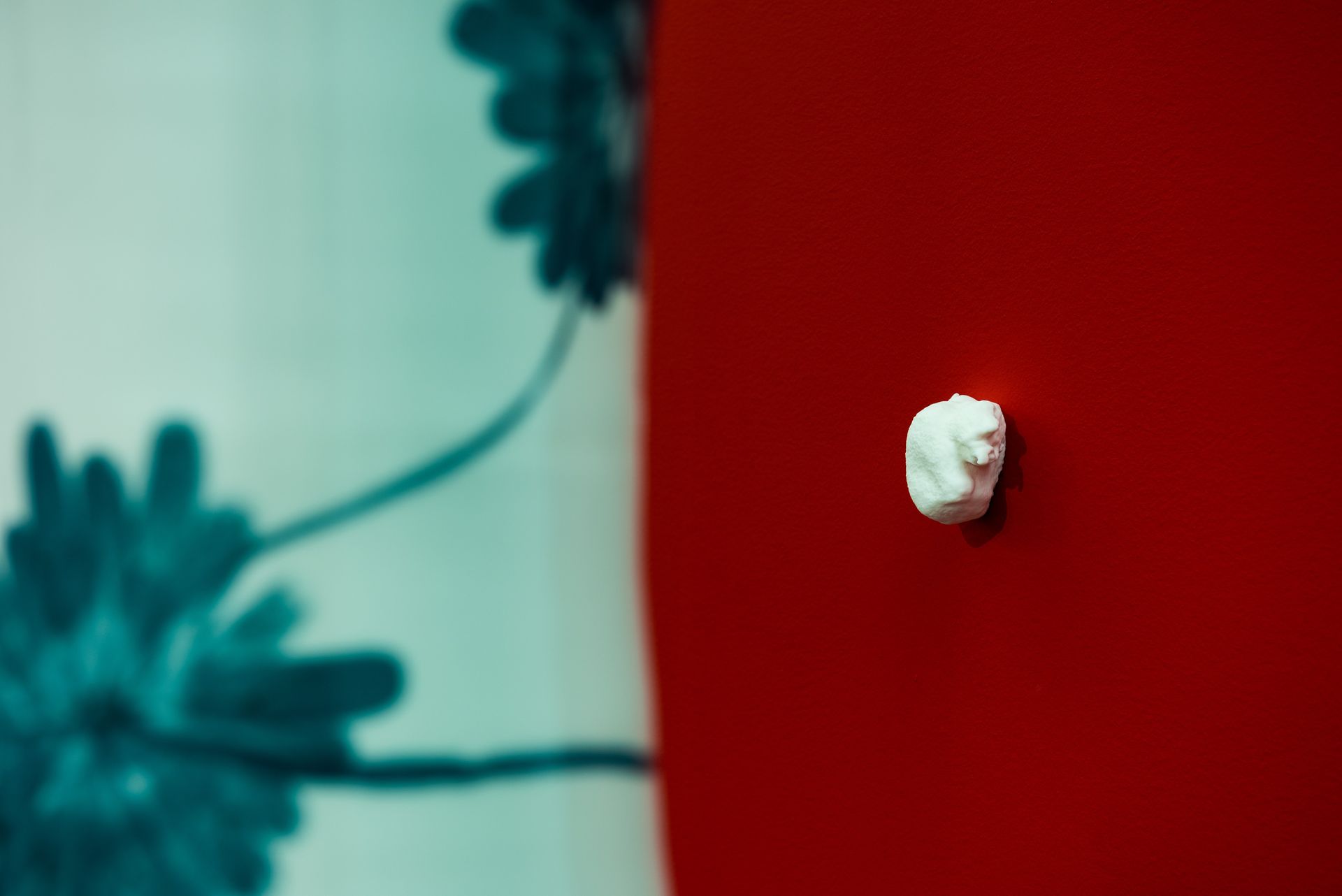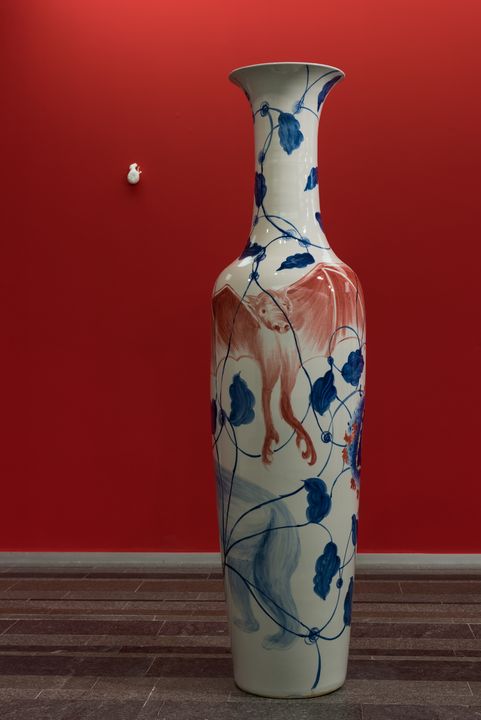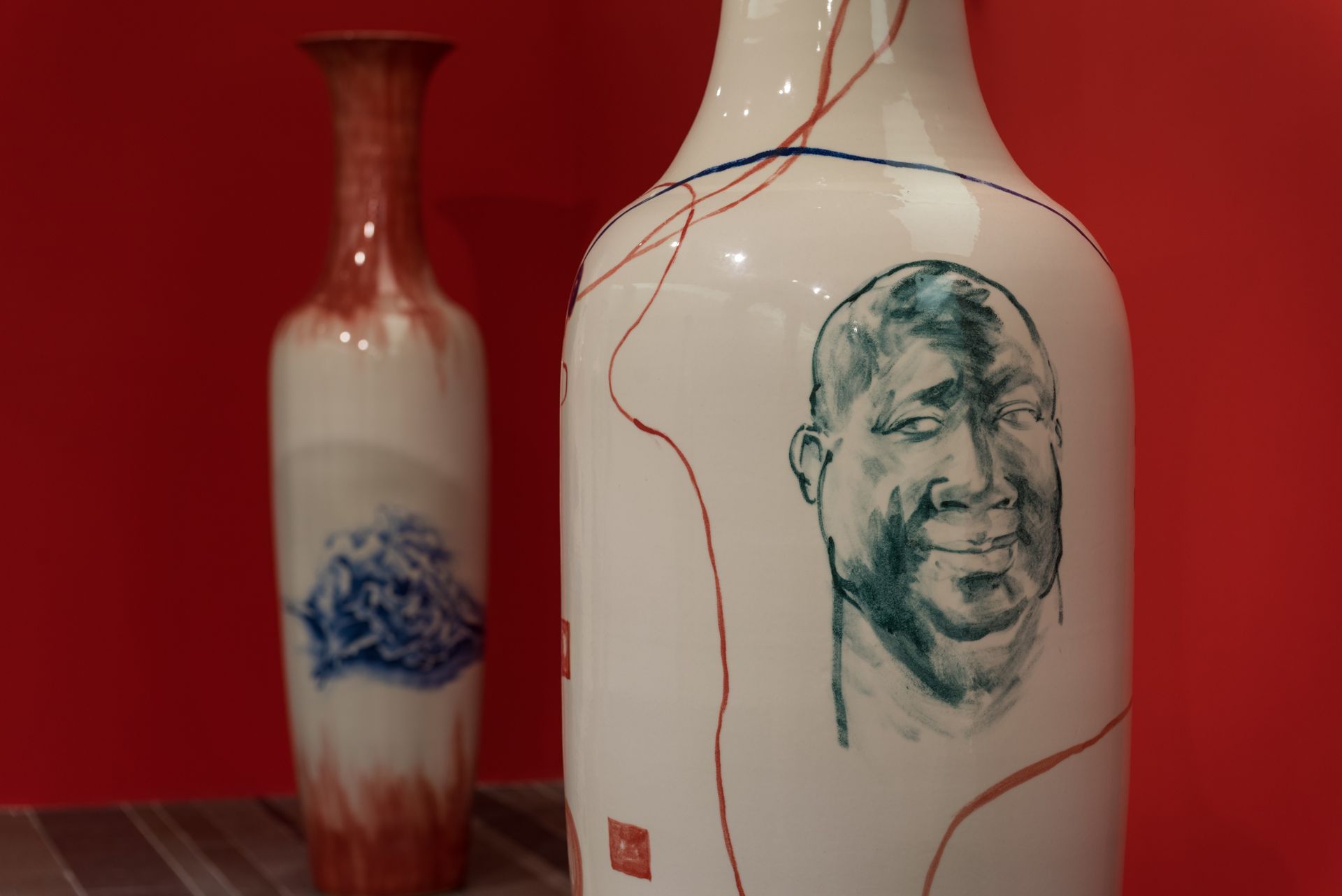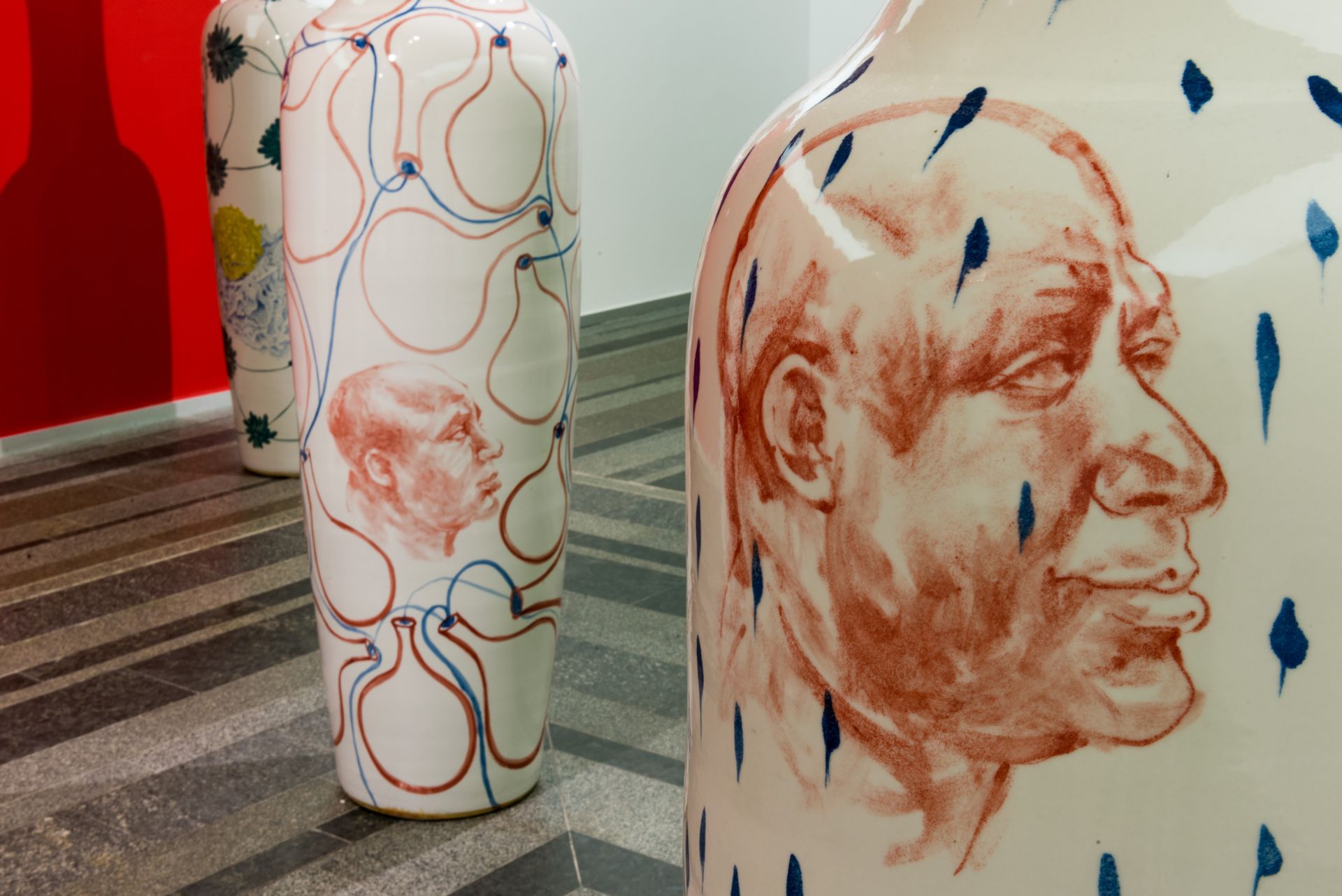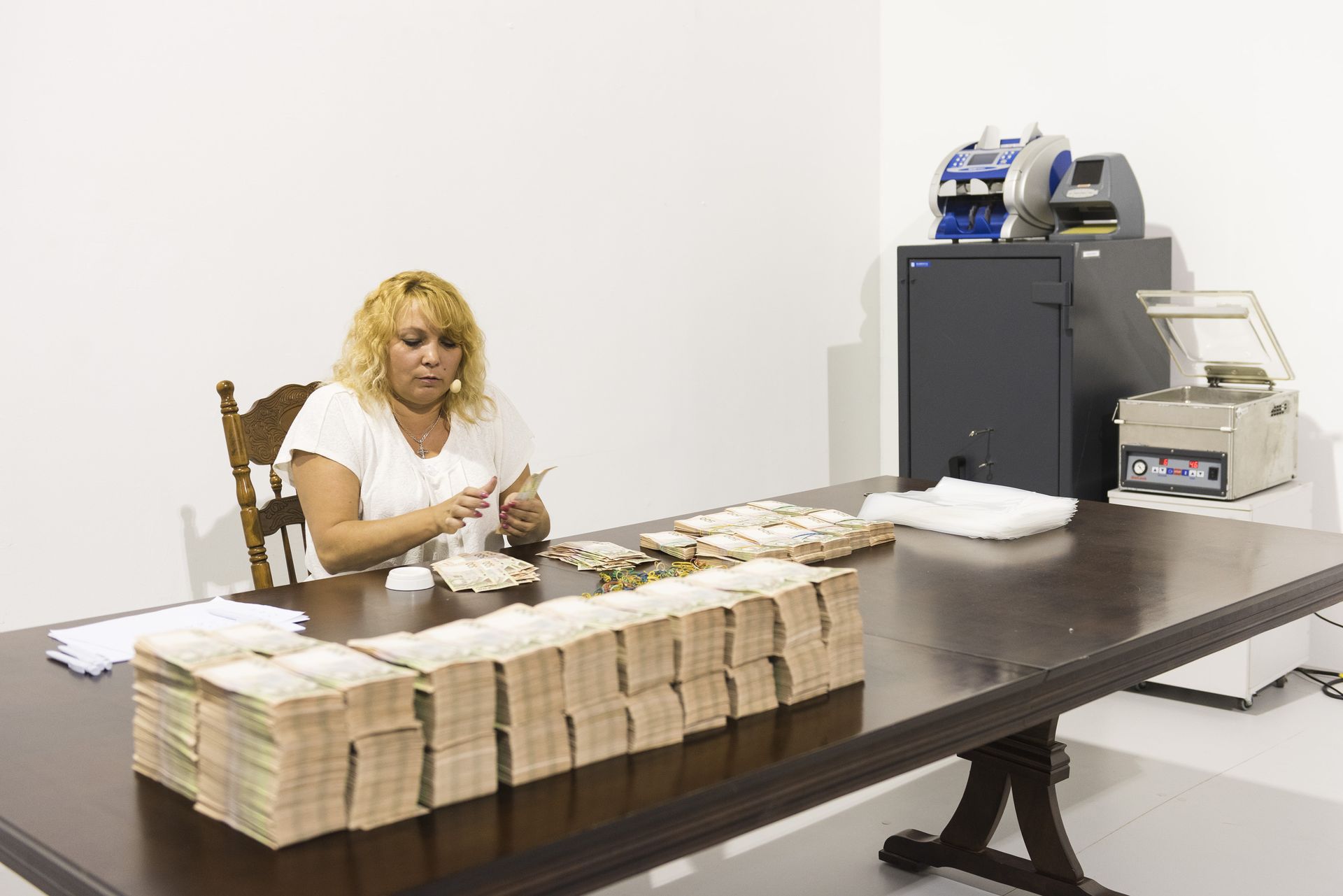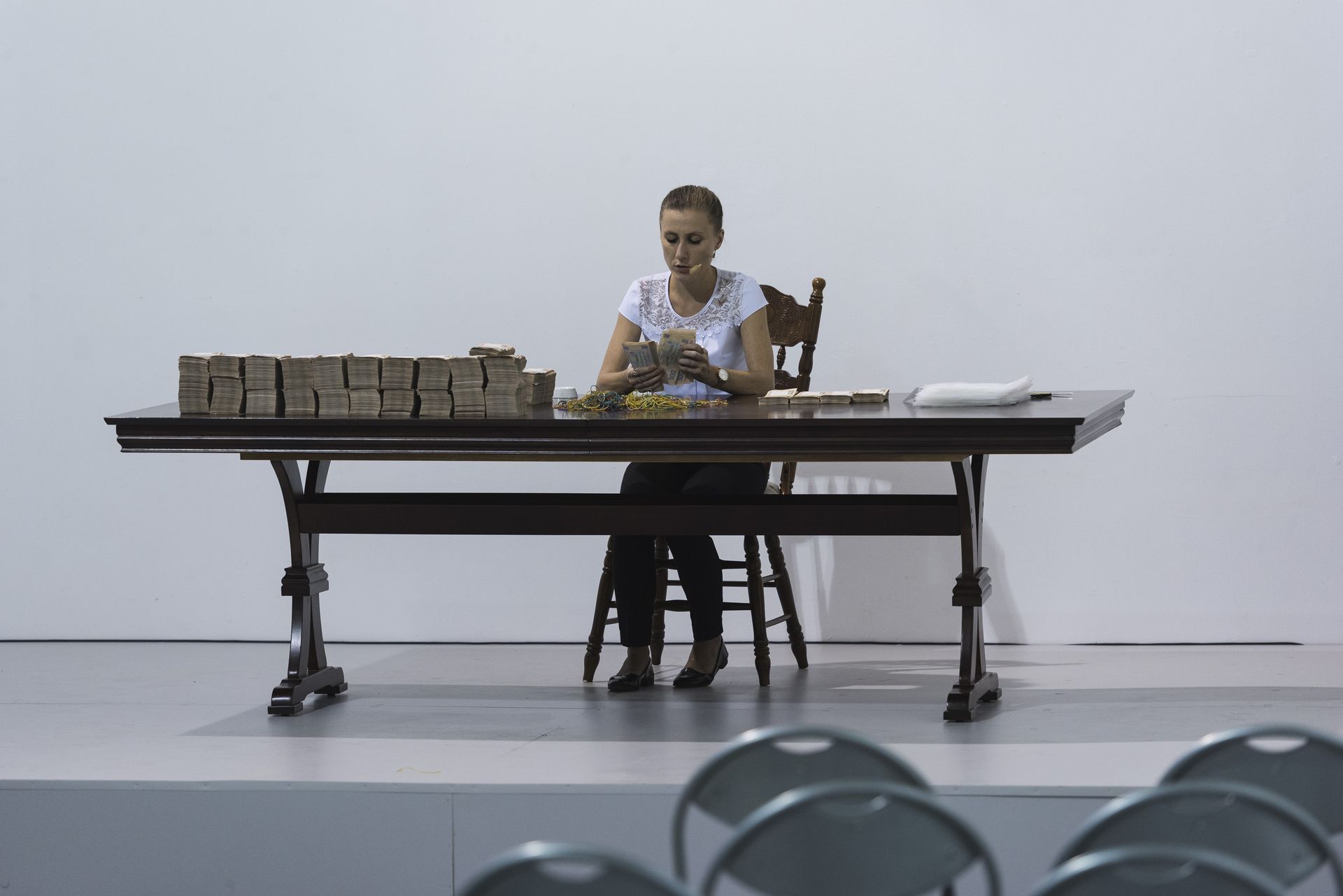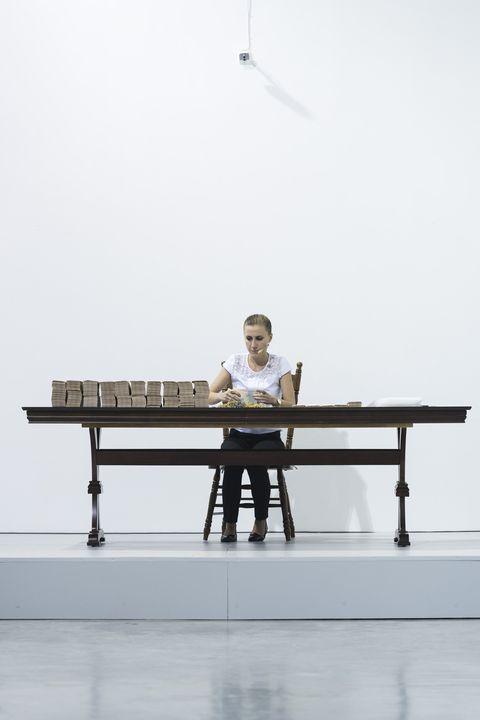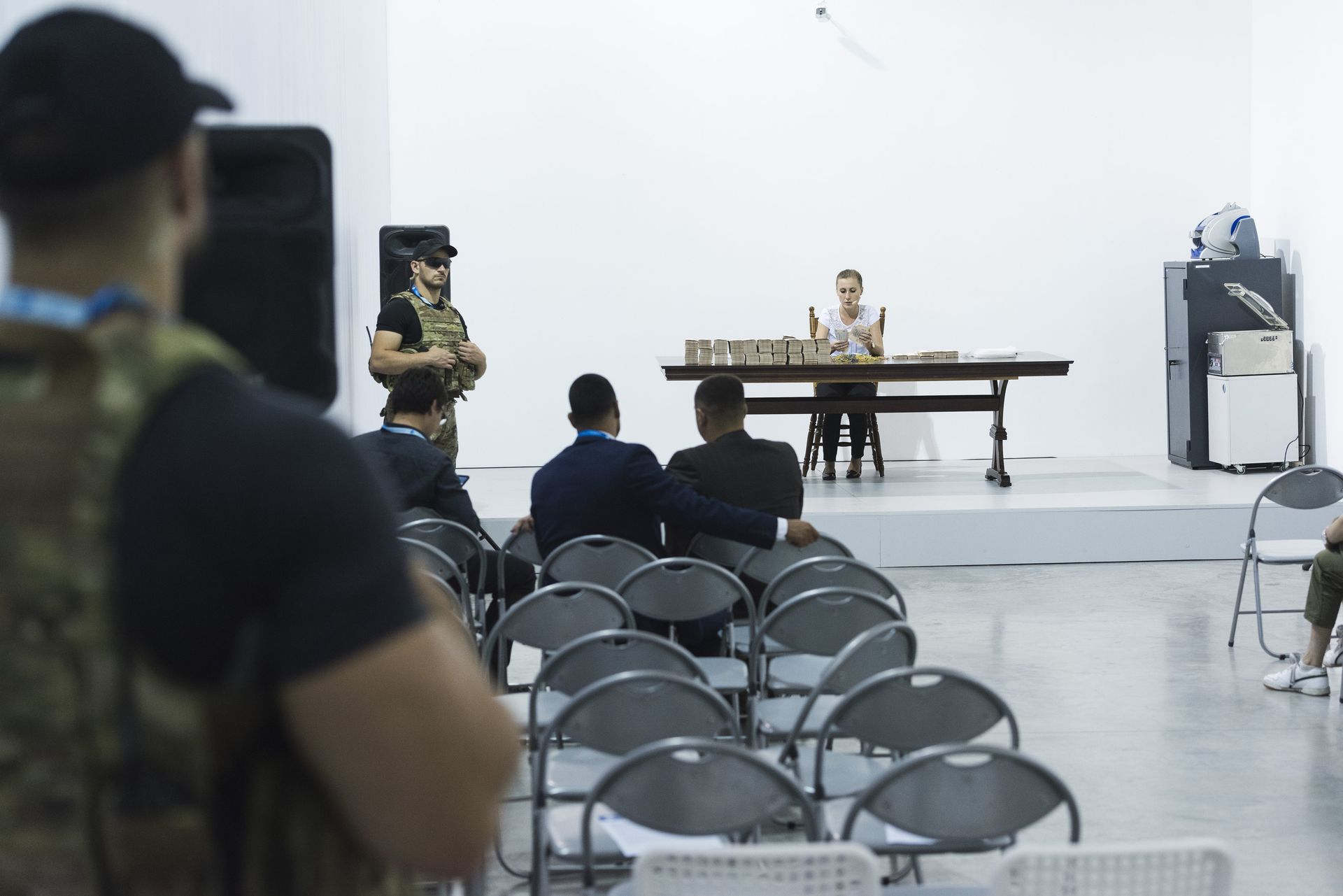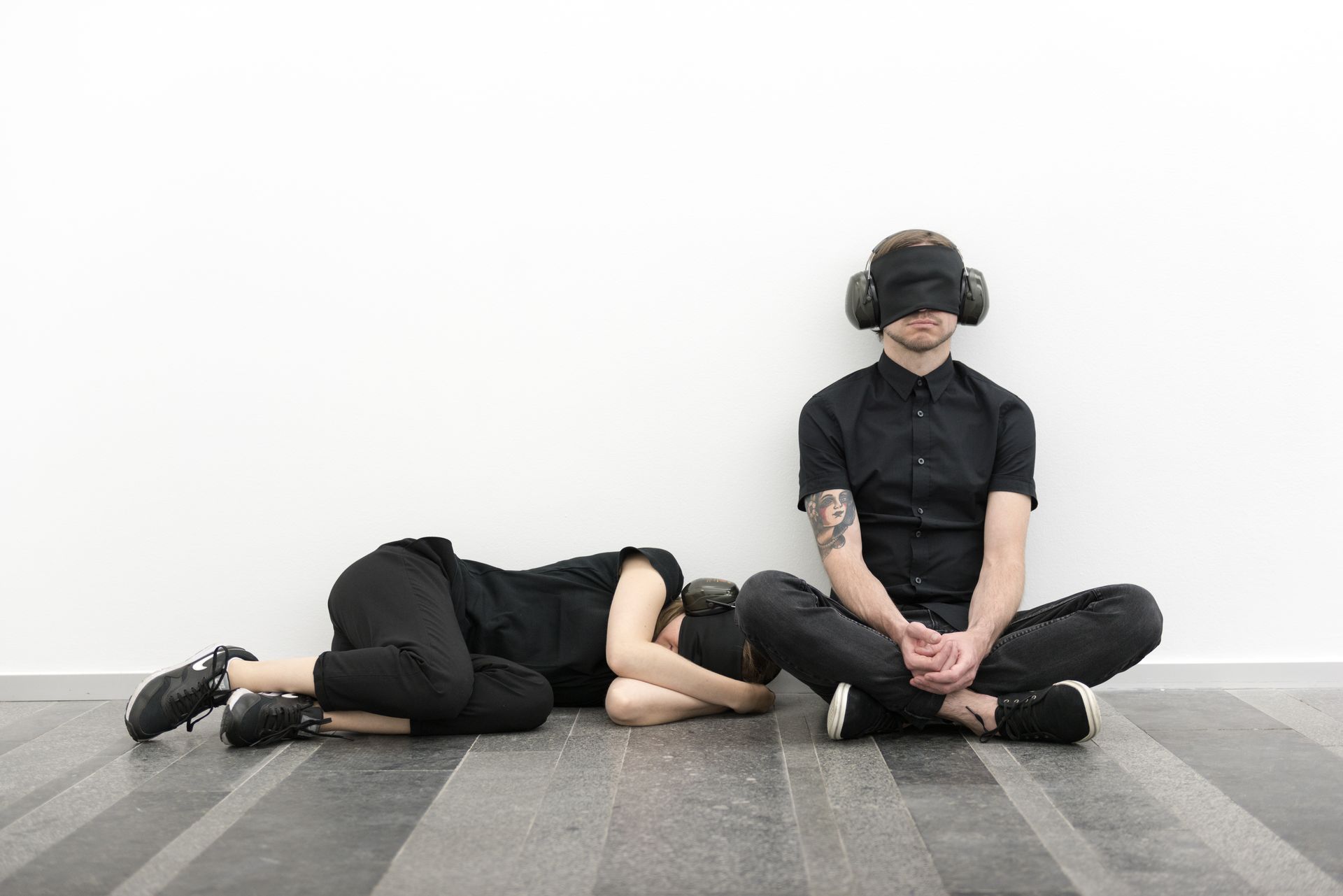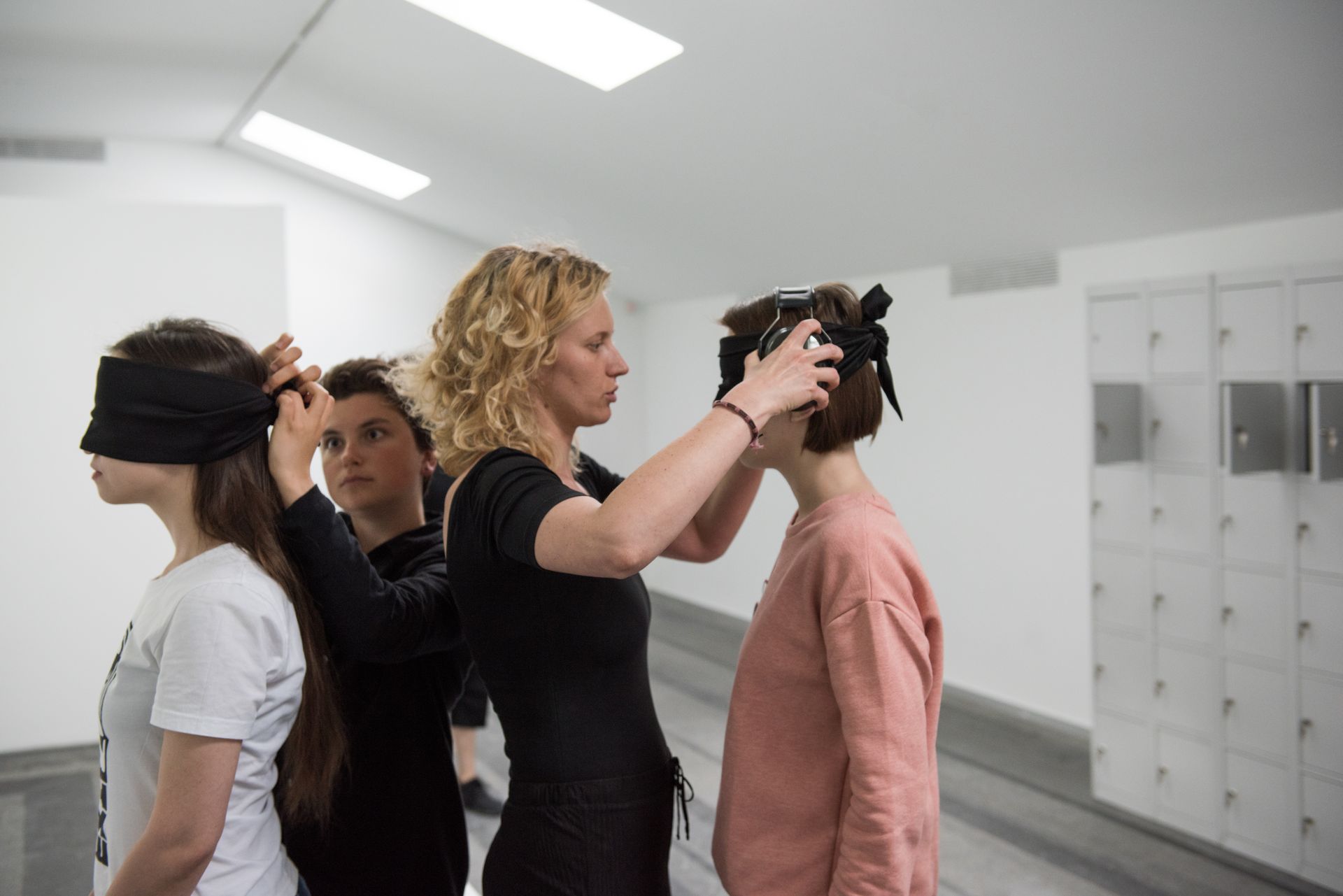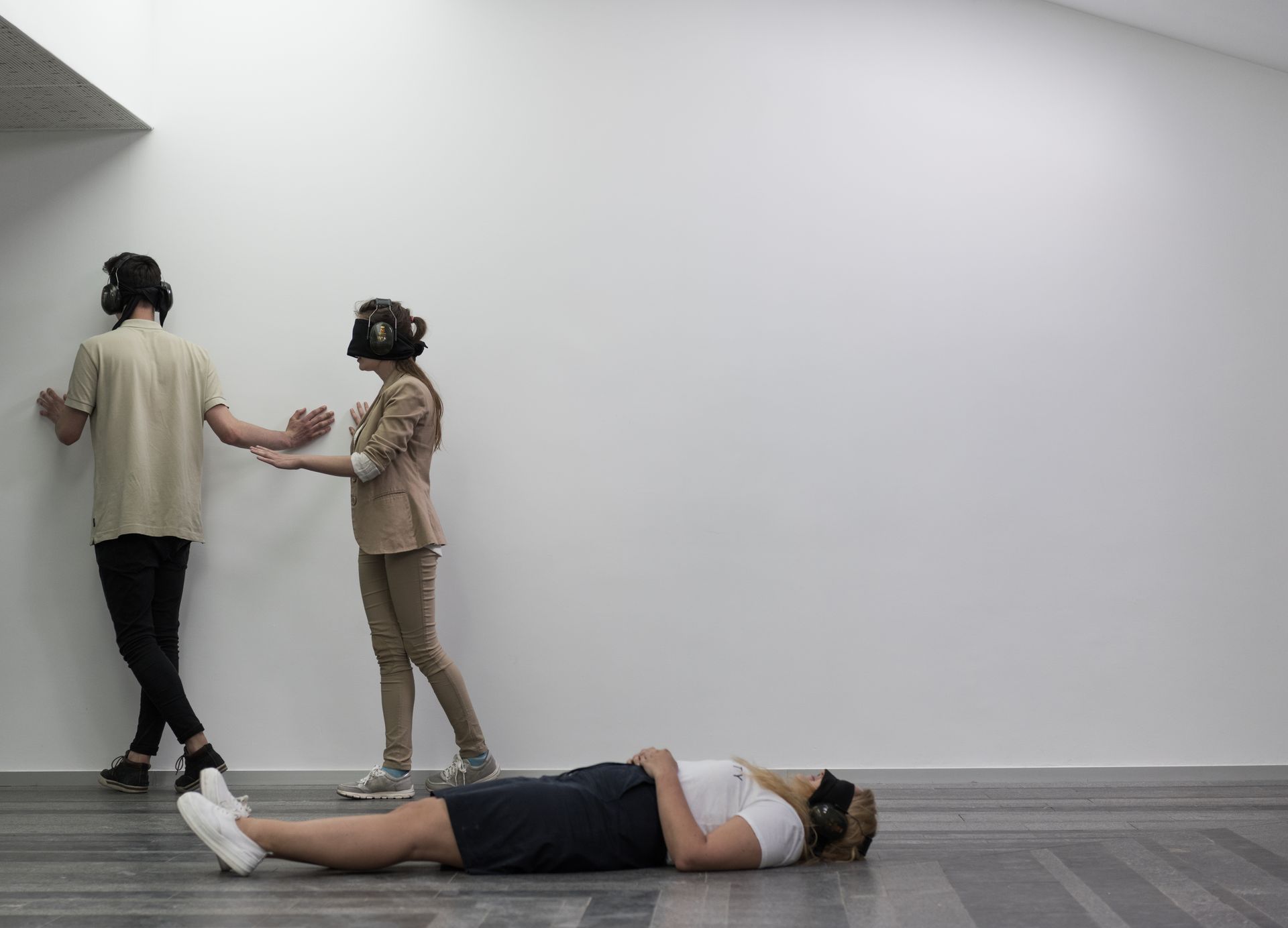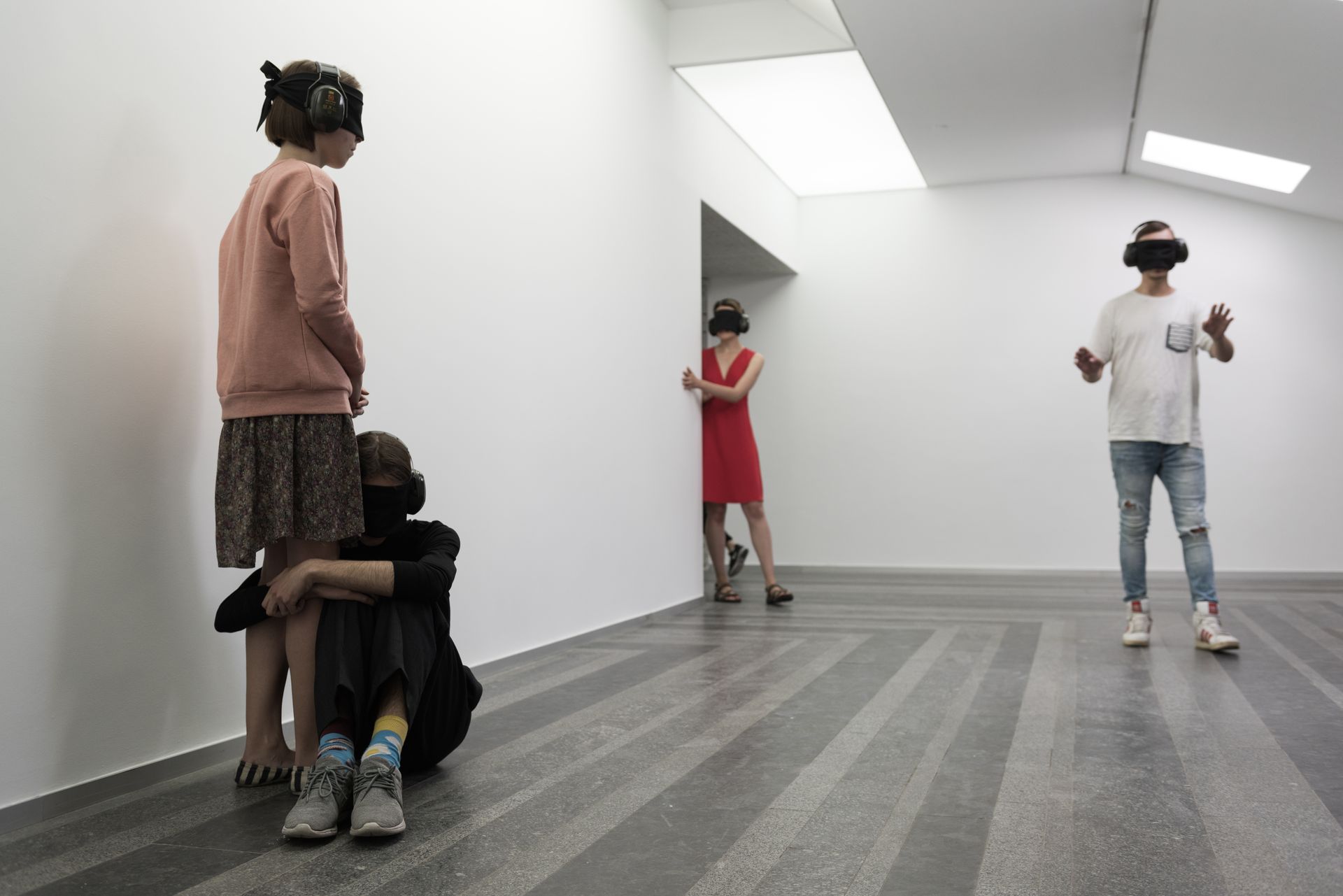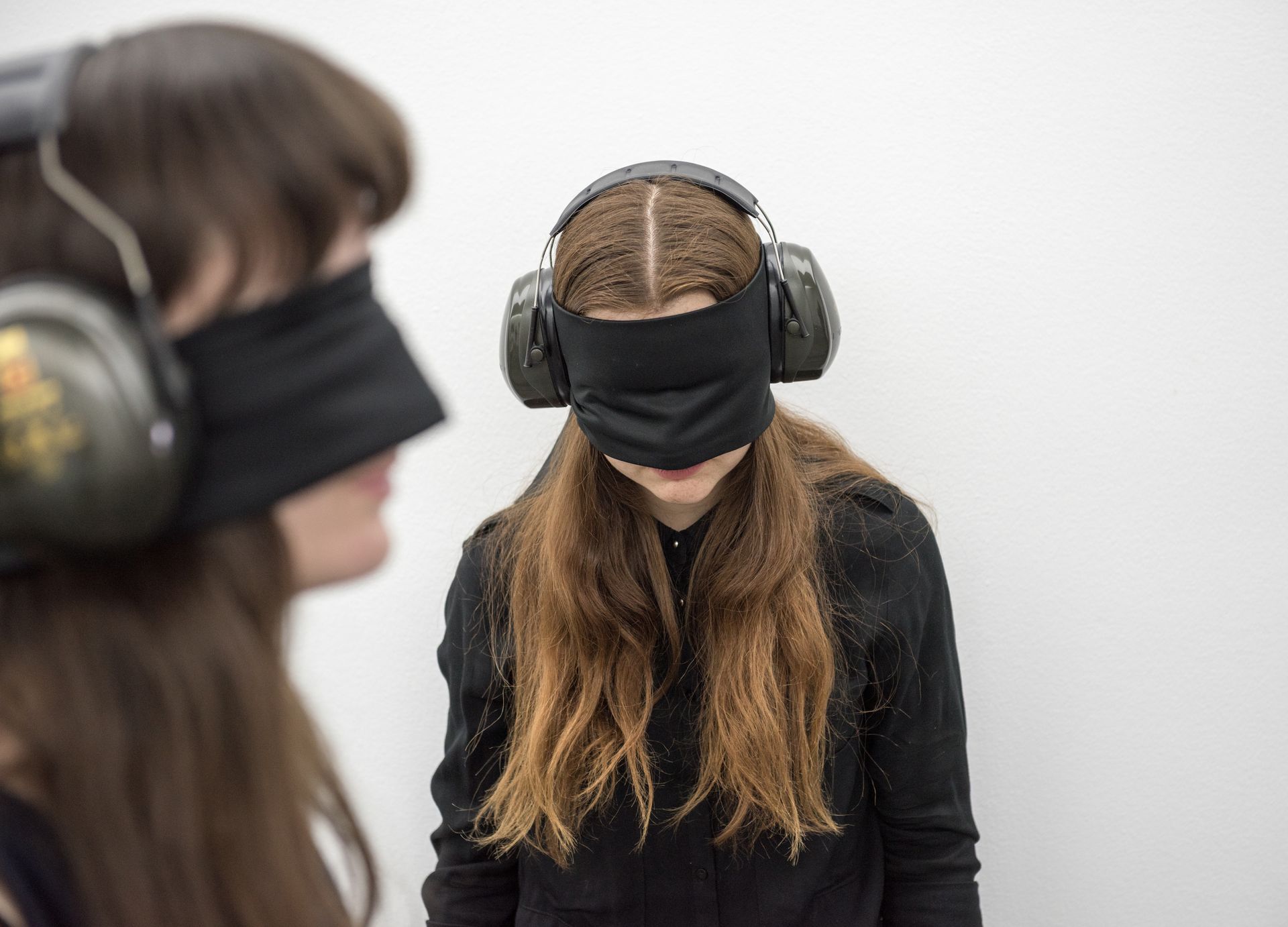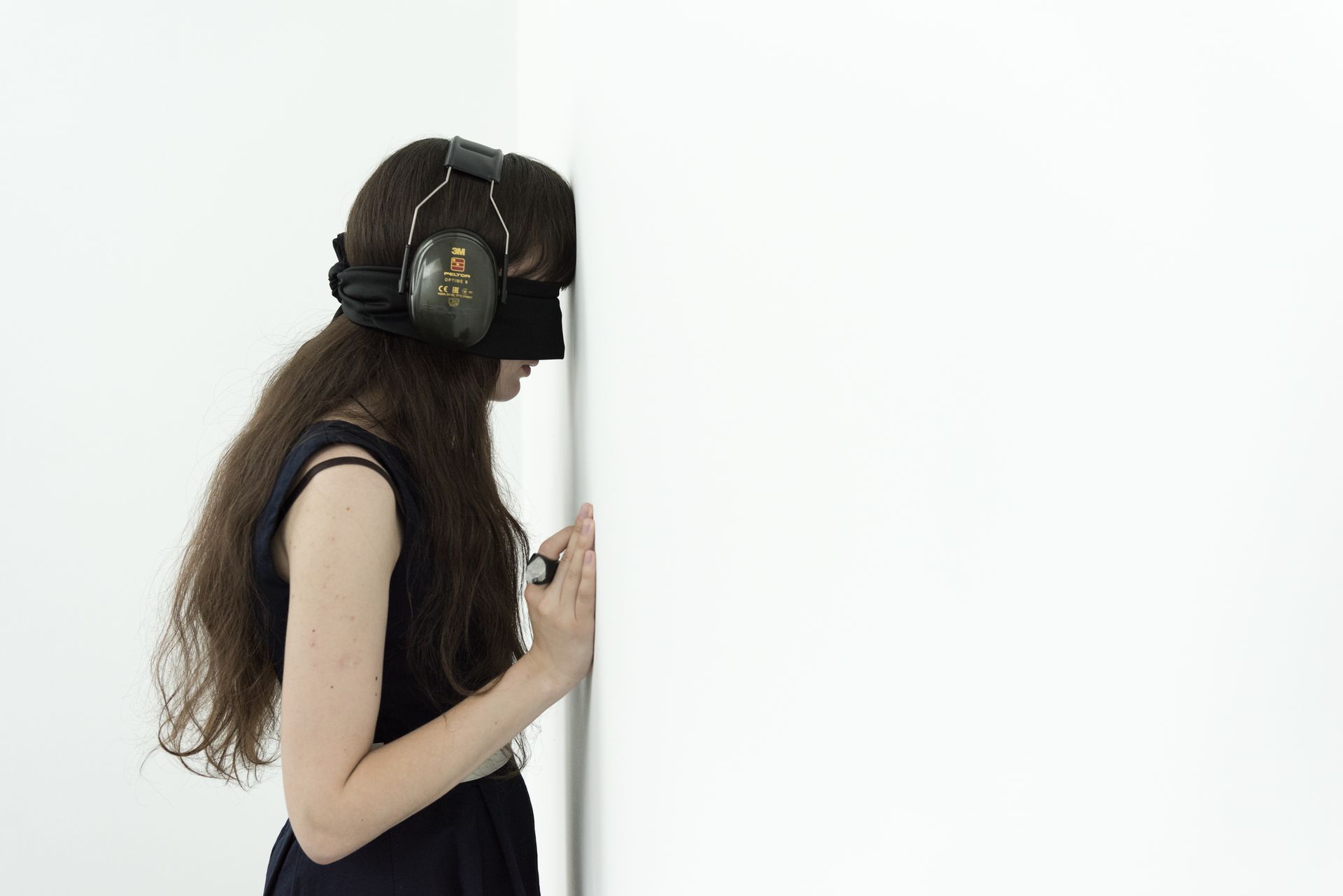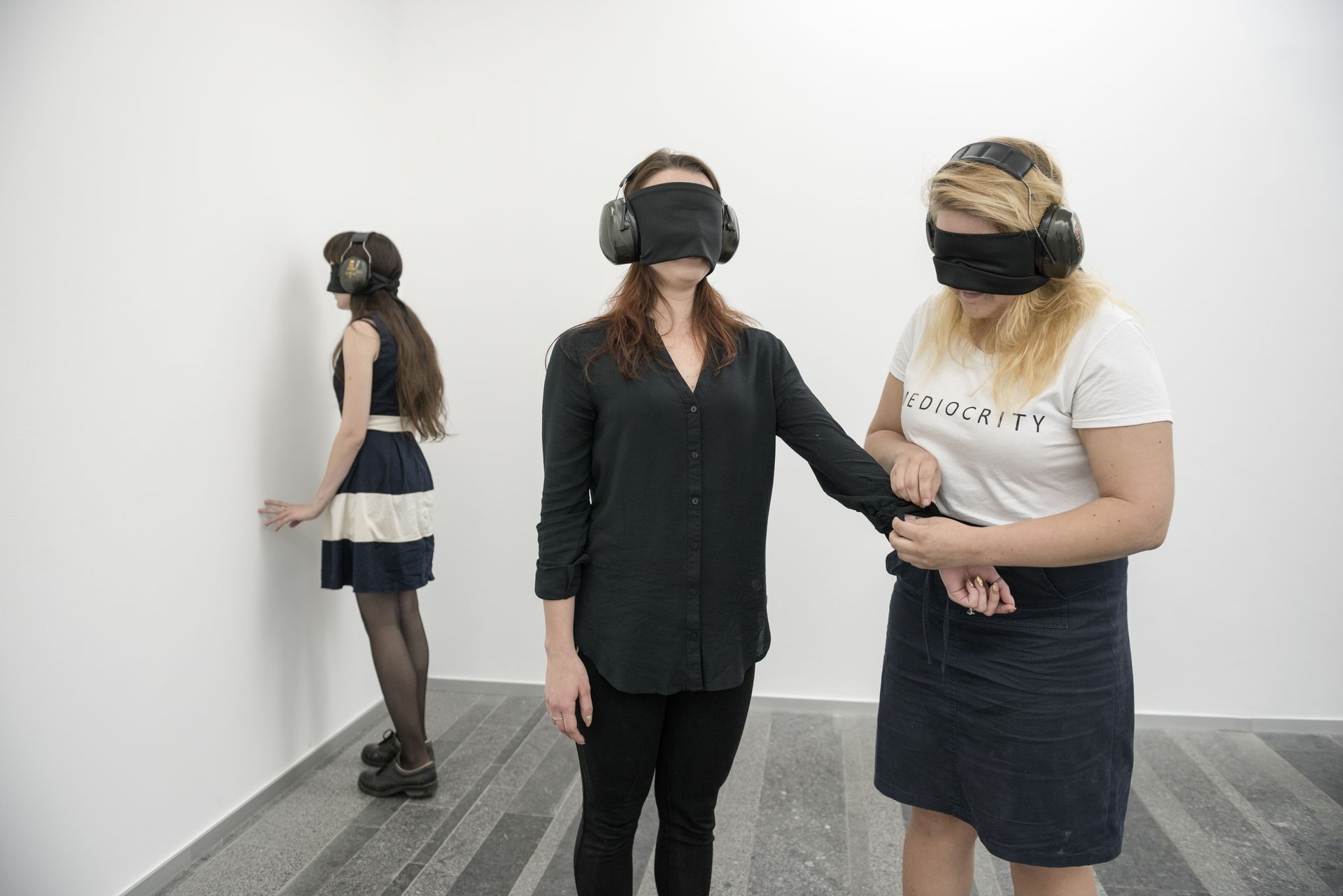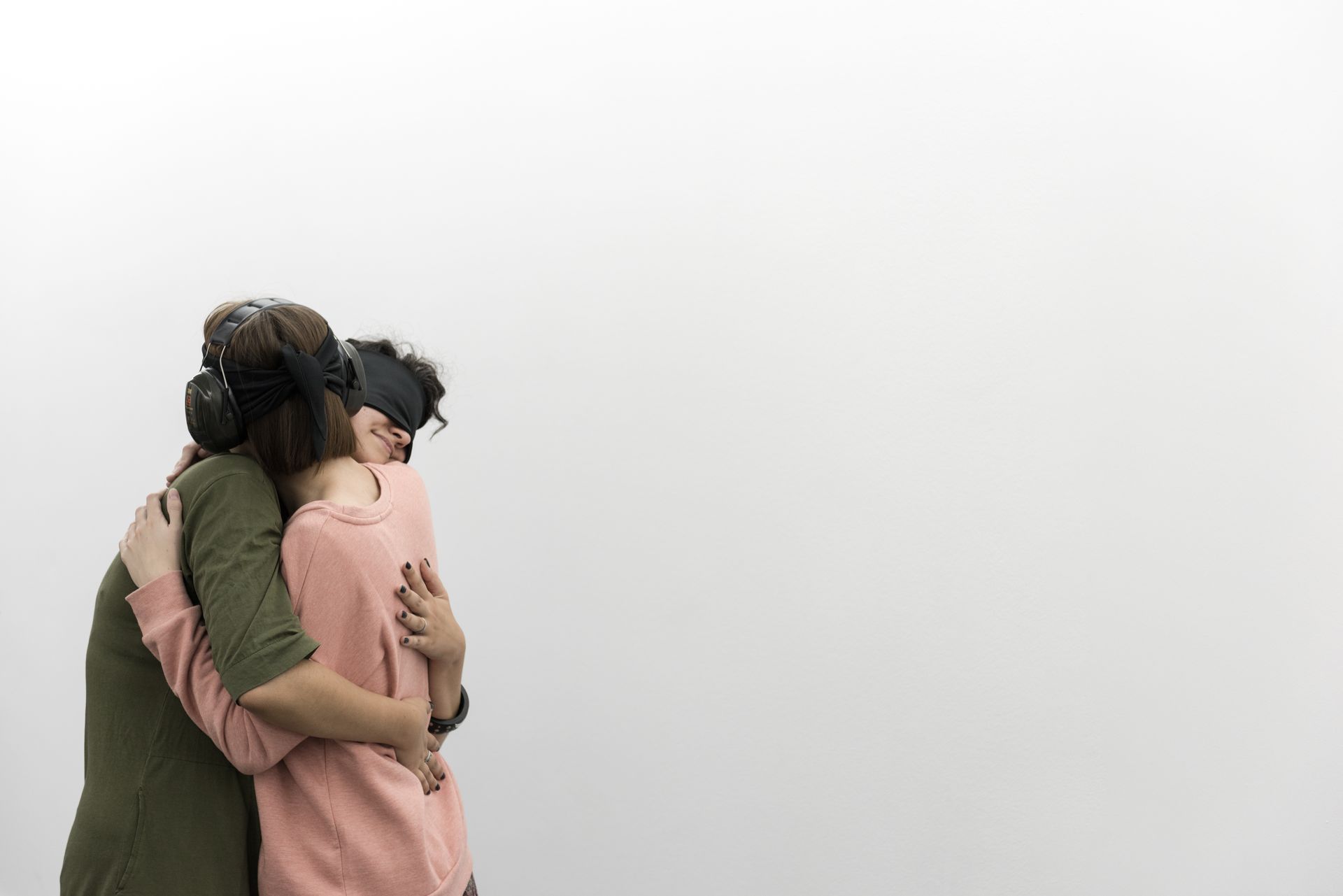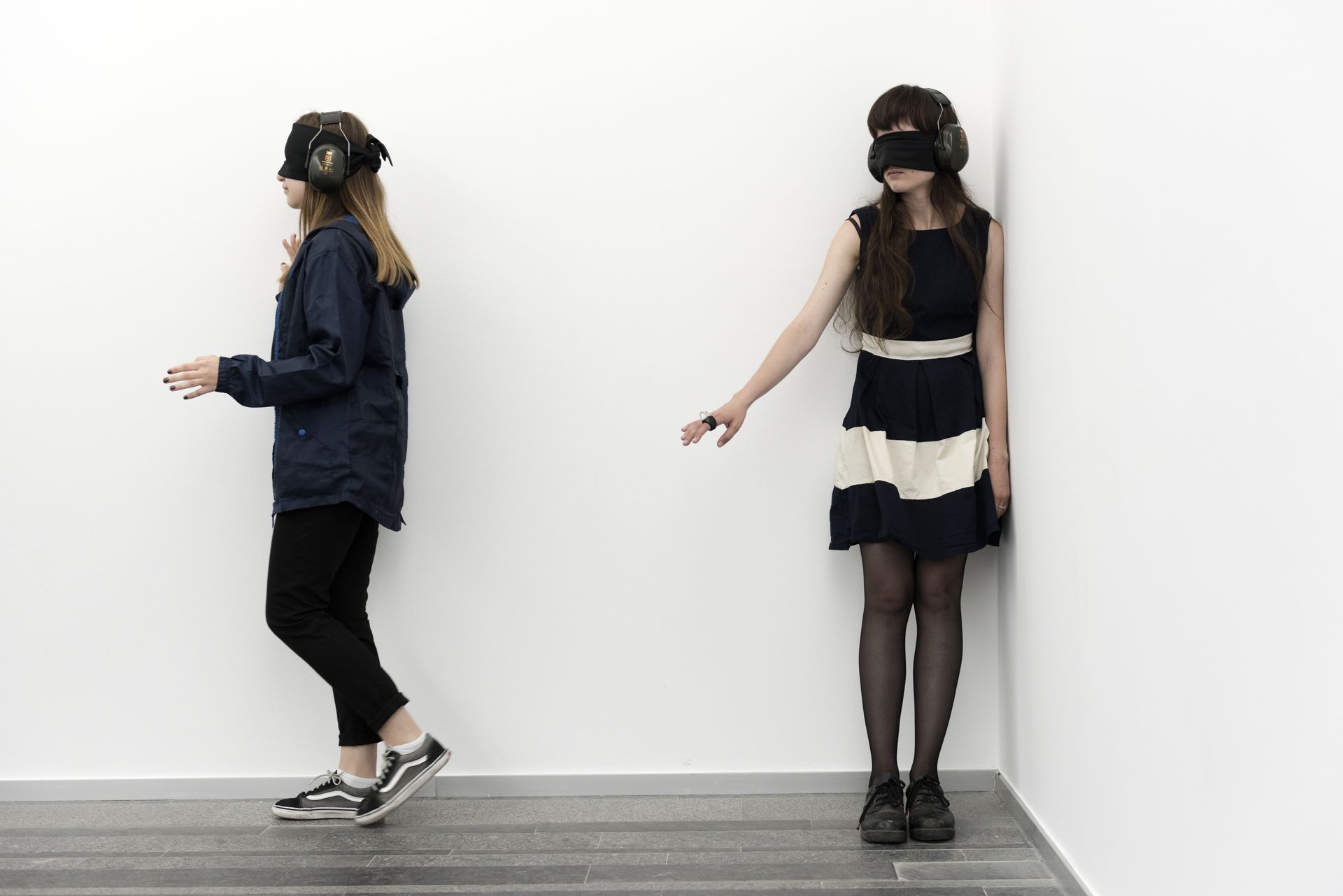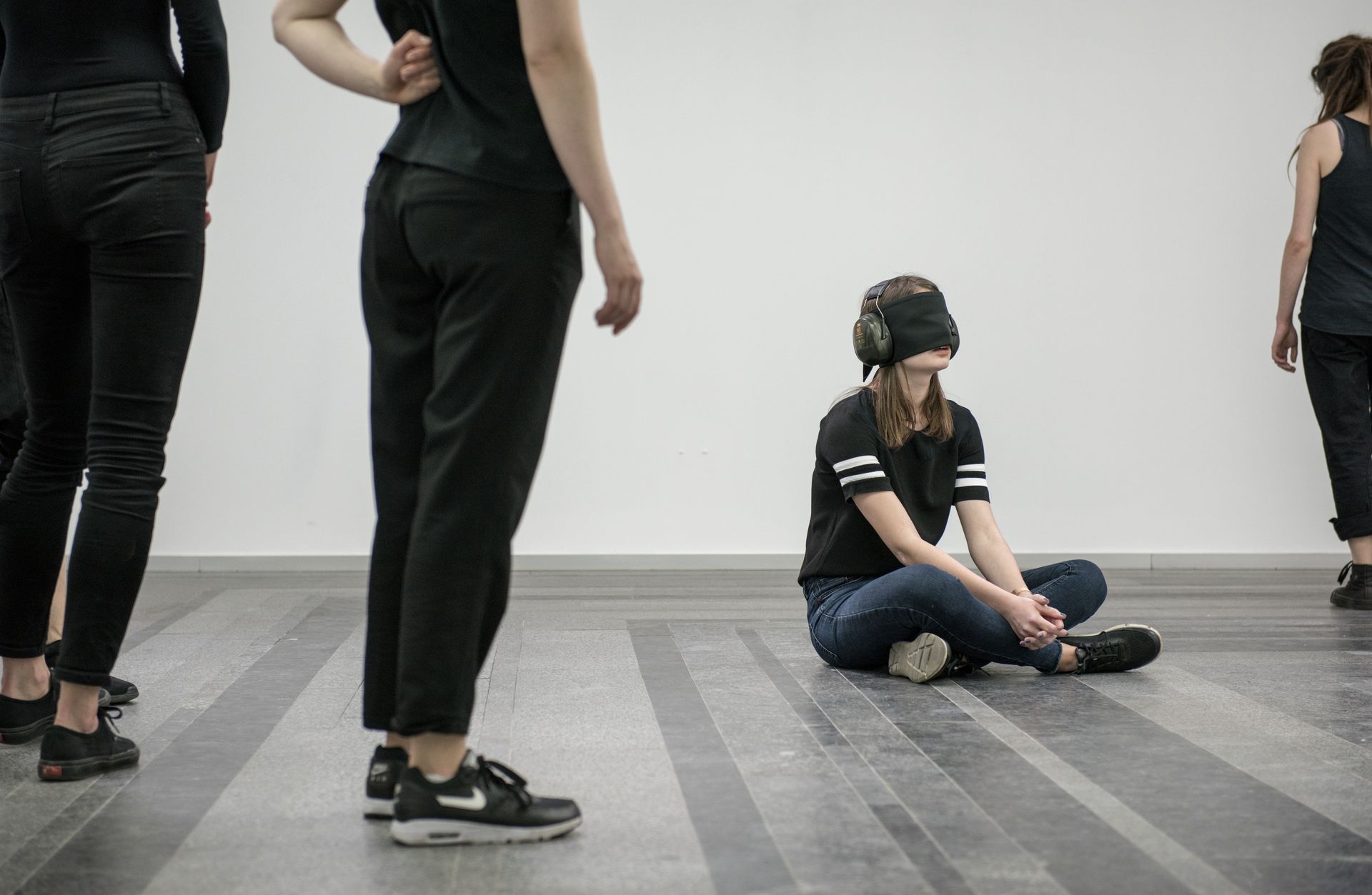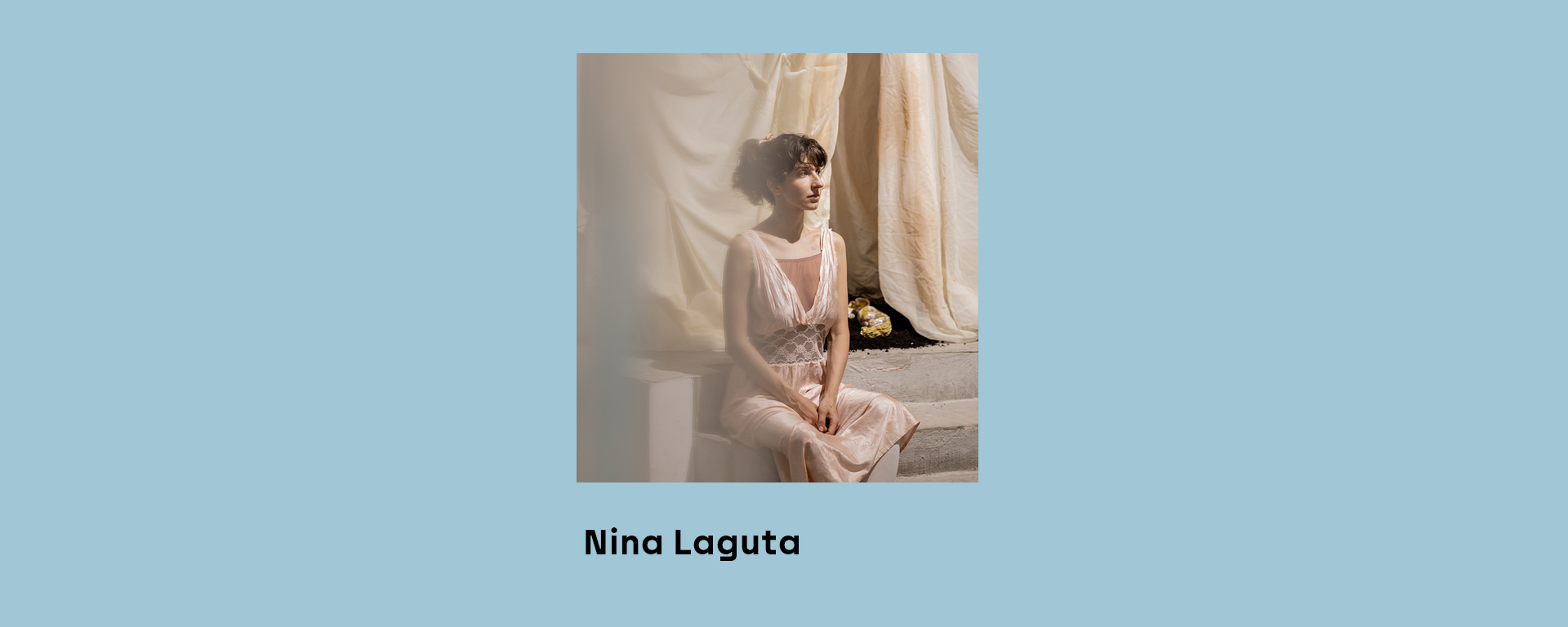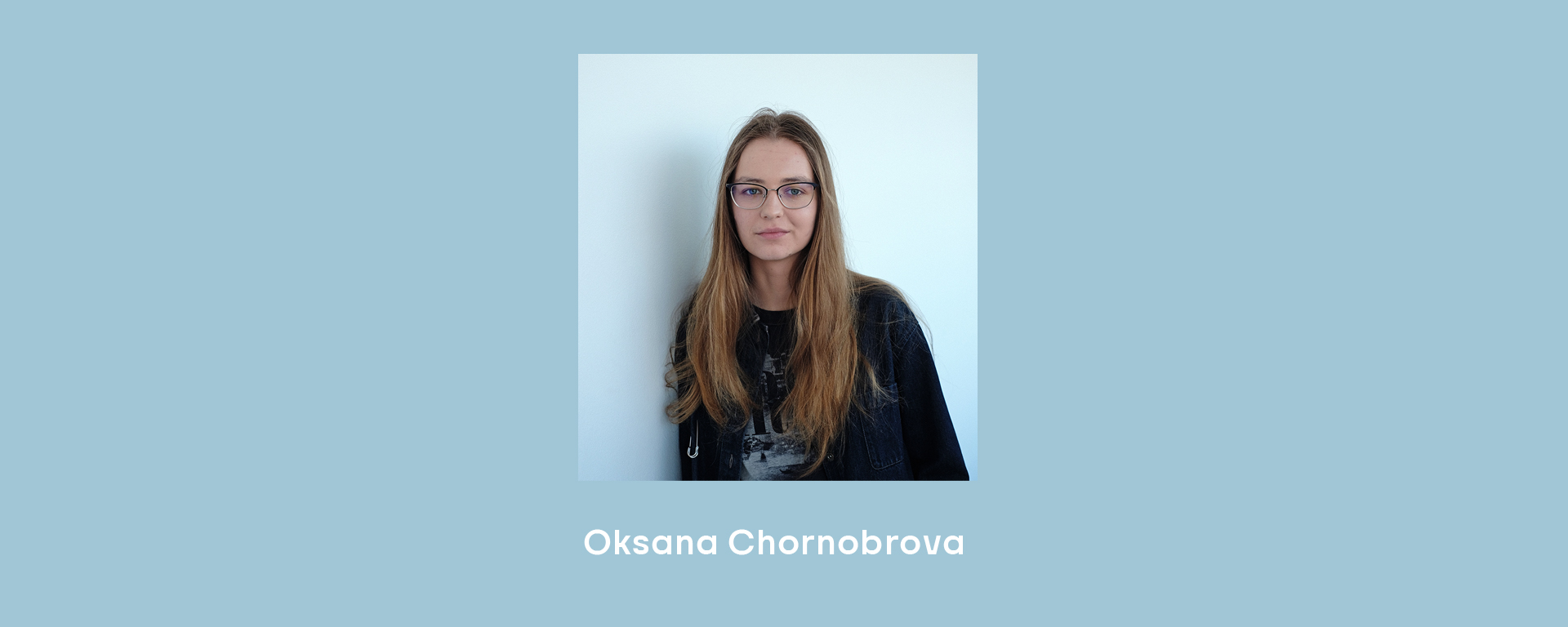Fragile State
The PinchukArtCentre is proud to present “Fragile State” – a major international group exhibition with 10 leading artists including Marina Abramovic, Jan Fabre, Urs Fischer, Douglas Gordon, Damien Hirst, Carlos Motta, Oscar Murillo, Santiago Sierra, Barthelemy Toguo and Ai Weiwei.
A Fragile State often reveals a delicate moment of vulnerability and might be an accurate description of the world around us. The notion of Fragile State reflects upon the fragile state of the world order, or in a more abstract sense it refers to ideological, cultural and social vulnerabilities. But it is equally a notion that can be understood in a deeply personal sense, the fragility of body and mind.
This exhibition meanders systematically in between those different definitions of the Fragile State. It provokes conversations linking the fragility of our body and mind, and the fragility of ideologies and historical understandings. It draws parallels between the fragility of youth and that of a country at war conflict or the fragility of life and that of a State at risk.
The exhibition starts with a reflection on culture, civilization and history, embodied in Ai Weiwei’s LEGO version of Dropping a Han Dynasty Urn (2016). The work is a recent translation of the early 1995 images where Ai Weiwei photographed himself dropping and breaking a 2000-year-old ceremonial Urn from the Han Dynasty (considered a golden Age in Chinese history). Responding to public outcry, he famously replied: ”General Mao used to tell us that we can only build a new world if we destroy the old one”. That thought is reinforced by Carlos Motta’s work, Colonial Forts #10 (2013). The artist traced back the architectural remains of the first colonists of Latin America who in their conquest of a continent destroyed entire civilizations. This theme continues in various forms throughout the exhibition and comes full circle with Douglas Gordon’s work, The End of Civilisation (2012). The work shows a grand piano being burned in the panorama of the Scottish border with England, alongside Hadrian’s Wall. His work is both meaningful in historical terms, reminiscent of Roman civilization ending right there at Hadrian’s wall, and in a contemporary political sense, provoking a thinking on what this border means for England and Scotland today.
The fragility of States, as a political understanding, runs in a historic sense through all the above-mentioned works. The works by Santiago Sierra address this understanding today. In 2012, he made Burned Word (2012) in Valencia (Spain). It shows a monumental word, “Future”, constructed in front of a poor looking apartment complex. The word is set on fire and burns to the ground. This took place at the height of the Financial Crisis in Spain, a moment when the state was no longer capable of supporting its own financial sector and received a financial bailout of more than 100 billion euros from the EU. At the same time, support for an independent Catalonia increased dramatically. Sierra’s second work called Veterans of war facing the corner continues a series of performances he has staged since 2011, inviting war veterans from historical conflicts to simply stand in a corner with their backs to the viewer for a period of time. The performance emphasizes the soldier as a worker in the industry of war. It critically questions his or her social position once they can no longer fight or work, while investigating the relationship between power and guilt. For the first time, Sierra is not working with veterans from a cold conflict, but with those who fought in Donbas, in eastern Ukraine, in a conflict that is still ongoing. Bringing a veteran of a still-ongoing conflict into the gallery provokes a confrontation with reality. It provokes thoughts on the veteran and his or her relationship to the political powers that need to bring this conflict to an end.
Veterans of war facing the corner speaks not only about a political state but also about personal fragility. This is a subject that is addressed very differently in Oscar Murillo’s work Frequencies (2013 – ongoing), a series of 28 canvases made with collaboration of children from all over the world. The works are a part of a long-term project where Murillo attaches canvases to the desks of schoolchildren aged 10 to 16 years. The drawings capture a portrait of concerns, thoughts, fears, hopes and the imagination of a future generation. They move between the personal and political, representing a fragile moment in a young person’s life, a moment of openness and a view towards the future.
Urs Fischer also addresses personal fragility, but his subject draws from the ordinary and daily life with works like Internal Weather (2000), Chair for a Ghost: Urs (2003). His wax candle sculpture Untitled (2011) depicts the artist sitting at a table with a bottle of wine, slowly melting away through the course of the exhibition. This traditional Memento Mori represents the body in decay and stands in conversation with Overcome the Virus! (2016) by Barthélémy Toguo. His eight hand-painted vases are inspired by research into the HIV and Ebola viruses. Toguo explains the vases as larger than a human being, symbolizing our relationship to water, being both purifying and a possible source of contaminations. It expands the body’s fragility to the world around us, to nature and life itself, echoed in the work of Damien Hirst, Here Today, Gone Tomorrow (2008).
The final chapter of the exhibition is Marina Abramovic’s Generator (2014/2017). The artist invites the public to experience their body, their mind and the space surrounding them, completely deprived of any sense of hearing or sight. It brings the notion of Fragile State onto the viewer’s body and mind, placing them in a position of vulnerability while concentrating on a central notion in Abramovic’s work: “nothingness”. As she said: “The hardest thing is to do something which is close to nothing.”
Schedule of the performance “Generator” by Marina Abramovic:
- Saturday and Sunday from 12:00 until 21:00
Curator – Bjorn Geldhof, Artistic directorof the PinchukArtCentre.
